
About UsThe Numismatic Bibliomania Society is a non-profit organization devoted to the study and enjoyment of numismatic literature. For more information please see our web site at coinbooks.org SubscriptionsThose wishing to become new E-Sylum subscribers (or wishing to Unsubscribe) can go to the following web page link MembershipThere is a membership application available on the web site Membership Application To join, print the application and return it with your check to the address printed on the application. Membership is only $20 to addresses in the U.S., $25 for First Class mail, and $30 elsewhere. For those without web access, write to: David M. Sundman, Treasurer AsylumFor Asylum mailing address changes and other membership questions, contact David at this email address: dsundman@LittletonCoin.com SubmissionsTo submit items for publication in The E-Sylum, just Reply to this message, or write to the Editor at this address: whomren@gmail.com
BUY THE BOOK BEFORE THE COIN |
- WAYNE'S WORDS: THE E-SYLUM JULY 19, 2015
- NBS EVENTS AT THE 2015 ANA CONVENTION
- LAKE BOOKS 122ND SALE CLOSES JULY 21, 2015
- KOLBE &FANNING ONLINE SALE CLOSES JULY 25, 2015
- LIBERTY SEATED COLLECTOR'S CLUB 2015 AUCTION
- MORTENSEN ISSUES NUMISMATIC AUCTION CATALOG PRICE LIST
- NEW BOOK: ABEL BUELL AND THE CONNECTICUT AND FUGIO COINAGES
- NEW BOOK: GUIDE BOOK OF MERCURY DIMES, STANDING LIBERTY QUARTERS, AND LIBERTY WALKING HALF DOLLARS
- NEW BOOK: APPRAISING YOUR COIN COLLECTION
- BOOK REVIEW: ABEL BUELL AND THE CONNECTICUT AND FUGIO COINAGES
- NOTES FROM E-SYLUM READERS: JULY 19, 201
- THE EARLIEST FEMALE U.S. MINT EMPLOYEES
- THOUGHTS ON THE PRINTED WORD IN NUMISMATICS
- WHAT IF CASH HAD BEEN INVENTED AFTER DEBIT CARDS?
- MORE ON THE THREE HOURS FOR LUNCH CLUB MEDAL
- SMITHSONIAN OPENS NEW NUMISMATIC EXHIBIT
- THE 1836 JUDD-67 PATTERN GOLD DOLLAR
- CASSEL'S PATTERN COLLECTIONS OFFERED BY HERITAGE
- FALSE WESTERN AND DAWSON CITY GOLD BARS
- PRATT FAMILY HISTORIAN CYNTHIA KENNEDY SAM
- GOLD COIN USE IN THE EAST IN 1896
- QUERY: ISLE OF MAN COINS PROVENANCE SOUGHT
- MORE ON BERGRECHNUNGSMARKE
- COMMEMORATIVE MEDAL SELECTIONS FROM BALDWIN'S
- THE PAPER MONEY ART OF VICTOR DUBREUIL
- GEORGE CRUIKSHANK'S NOTES
- ROYAL MINT OFFERS PRINCE GEORGE'S SECOND BIRTHDAY COIN
- WHY ARE SOME UK COINS MAGNETIC?
- MONEY TALKS: THE OTIS B. WIGHT COLLECTION
- WAYNE'S NUMISMATIC DIARY: JULY 19, 2015
- ARTICLE DISCUSSES BANKNOTE DESIGNS
- ALVES REIS: THE MAN WHO STOLE PORTUGAL
- PERUVIAN GUANO BONDS PAYABLE IN U.S. COINS
- COINS RECOVERED IN RAID ON ISIS
- THE COMMAGENIAN COINAGE MITHRADATES
- MARKOWITZ ON THE ANCIENT COINS OF CYPRUS
- PAY WITH BLOOD AT TRANSYLVANIAN FESTIVAL
- ARTICLE DETAILS TRAIL THAT LED TO TOMMY THOMPSON
- U.N. SAYS 'CAPT. KIDD'S TREASURE' ISN'T
- ATOCHA MONEY CHAIN AMONG AUCTION ITEMS
- TREASURE SEEKERS SEARCH FOR AUTHOR'S HIDDEN CHEST
- FEATURED WEB SITE: BANKNOTE WORLD
Click here to access the complete archive
To comment or submit articles, reply to whomren@gmail.com
WAYNE'S WORDS: THE E-SYLUM JULY 19, 2015

NOTE: The E-Sylum archive search feature on the NBS web site was broken for a while, but seems to be partly working again. It uses the Google Custom Search Engine feature, and Google apparently had a hiccup. Perhaps they're running out of places to store their billions of dollars in market valuation. If you try a search and it doesn't work for you, go to the main Google site and include "site:coinbooks.org" in your query. This will limit your search results to just the NBS web site.
New subscribers this week include: Gregory Field, Hugo Vanhoudt, and William Charton. Welcome aboard! We now have 1,852 subscribers.
This week we open with NBS events at the ANA convention and reminders of three upcoming numismatic literature sale closing dates, a catalog fixed price list, three new books and one review.
Other topics include the earliest female employees in the U.S. Mint, the Three Hours for Lunch Club Medal, the new National Numismatic Collection exhibit at the Smithsonian, coin designer Bela Lyon Pratt, George Cruikshank's notes, the greatest swindle of all time, and coins recovered in a raid on ISIS.
To learn more about Abel Buell, the Otis B. Wight Collection, Wurzbach-Tannenberg’s medal cabinet, a medal made of soap, the 1836 pattern gold dollar, Dawson City, Y.T. gold bars, Isle of Man coins, the paper money art of Victor Dubreuil, blood money, Guano bonds and the Envoy Extraordinaire and Minister Plenipotentiary of Peru, read on. Have a great week, everyone!
Wayne Homren
Editor, The E-Sylum
NBS EVENTS AT THE 2015 ANA CONVENTION
Thurs., August 13, 11:30 am to 1:00 pm, NBS Symposium, Room 22
Thurs., August 13, 1:00 to 2:30 pm, NBS Board Meeting, Room 24
Friday, August 14, 11:30 am to 1:00 pm, NBS General Meeting, Room 5
 On Thursday, August 13, the Newman Numismatic Portal (NNP) team will present at the NBS Symposium at 11:30AM. This website, funded by the Eric P. Newman Numismatic Education Society and administered through Washington University in St. Louis, focuses on gathering and preserving numismatic knowledge for the benefit of all collectors and researchers. Project consultants include well-known bibliophiles Len Augsburger, Roger Burdette, John Feigenbaum, Wayne Homren, and Joel Orosz. The NNP team will demonstrate the current website and discuss the roadmap going forward.
On Thursday, August 13, the Newman Numismatic Portal (NNP) team will present at the NBS Symposium at 11:30AM. This website, funded by the Eric P. Newman Numismatic Education Society and administered through Washington University in St. Louis, focuses on gathering and preserving numismatic knowledge for the benefit of all collectors and researchers. Project consultants include well-known bibliophiles Len Augsburger, Roger Burdette, John Feigenbaum, Wayne Homren, and Joel Orosz. The NNP team will demonstrate the current website and discuss the roadmap going forward.
To view the complete convention schedule of events, see:
/www.money.org/worldsfairofmoney/schedule
LAKE BOOKS 122ND SALE CLOSES JULY 21, 2015
This is a reminder that Lake Books’ 122nd mail-bid sale of numismatic literature will close on Tuesday, July 21, 2015 at 5:00 PM (EDT). The 460-lot sale contains selections from the library of Maj. C.H. (Rusty) Schroeder and is especially rich in reference material relating to Ancient and World coinage. Other sections cover Paper Money, Literature dealers, Tokens and Medals, and Exonumia. You can view the catalog at http://www.lakebooks.com/current.html and bids may be placed by telephone, email or fax until the closing time.
Good Luck with your bidding, Fred
Lake Books
6822 22nd Ave N
St. Petersburg, FL 33710-3918
727-343-8055 fax: 727-381-6822
KOLBE &FANNING ONLINE SALE CLOSES JULY 25, 2015
Kolbe &Fanning Numismatic Booksellers will be offering a variety of numismatic literature in an online sale to be held this upcoming Saturday, July 25.
Highlights include signed books and other memorabilia from the library of Margo Russell, editor of Coin World from 1962 to 1985, and works on early U.S. coinage from the library of Raymond Hale.
Some selections from the online sale include:
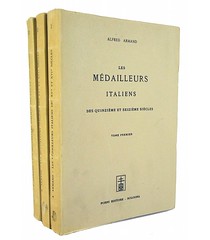
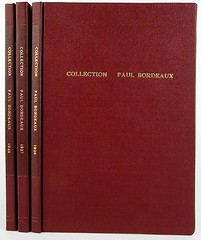
Lots 18 and 101
--The Forni reprint of Armand on Italian medalists (lot 18).
--All three parts of the Collection Paul Bordeaux, Feuardent Frères 1926-29 (lot 101).
--The combined hardcover edition of Heritage’s 2006 Jules Reiver sales (lot 128).

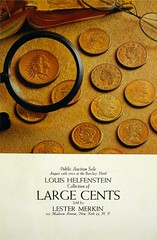
Lots 128 and 210
--An original typescript of Michael Hodder’s important work on New Jersey die J, as given to John J. Ford, Jr. (lot 141).
--Complete set of Lester Merkin catalogues (lot 210).
--A substantial group of 29 New Netherlands Coin Company auctions sales (lot 222).
--One of only 20 copies bound of the deluxe edition of Stack’s 1993 Reed Hawn sale (lot 293).
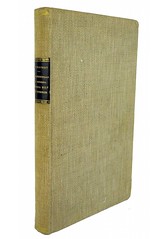

Lots 345 and 361
--The third installment (1937) of Wahlstedt’s rare work on private medals (lot 345).
--The two-volume reprint of Wurzbach-Tannenberg’s medal cabinet (lot 361).
The rest of the July 25 sale features a varied selection of books on ancient and foreign coins, as well as a nice offering of works on U.S. numismatics.
Although billed as an “online sale,” bidders may participate in the sale in a variety of ways: regular mail, email, phone, fax or online bidding (live or absentee). Any absentee bids must be received by the day before the sale (July 24) in order to be entered. Live online bidding will commence on Saturday, July 25 at noon eastern time. See auction.numislit.com to register for the sale, browse lots and place bids. All lots are illustrated online.
For more information, please contact David Fanning at df@numislit.com or see the Kolbe &Fanning website at numislit.com We look forward to hearing from you.

LIBERTY SEATED COLLECTOR'S CLUB 2015 AUCTION
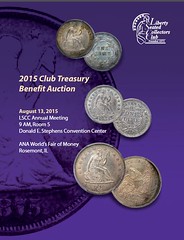 The Liberty Seated Collector's Club is holding a fund-raising auction at their annual meeting at the Chicago ANA World's Fair of Money. Bibliophiles may be interested in the nine lots of numismatic literature.
Catalogs were included with the Summer 2015 issue of The Gobrecht Journal.
Len Augsburger forwarded some of the lot descriptions. Thanks.
-Editor
The Liberty Seated Collector's Club is holding a fund-raising auction at their annual meeting at the Chicago ANA World's Fair of Money. Bibliophiles may be interested in the nine lots of numismatic literature.
Catalogs were included with the Summer 2015 issue of The Gobrecht Journal.
Len Augsburger forwarded some of the lot descriptions. Thanks.
-Editor
Lot 6. Gobrecht Journal #121, Fall 2014, Small format.
This is a rare “transitional”
issue of the Gobrecht Journal, sandwiched in between the black &white
small format editions (ending with issue #120) and full color, large
format (beginning with issue #121). For a short period of time, a full
color, small format version was envisioned, and Editor Bill Bugert
produced this copy as a sample. Full color printing in the numismatic
world is becoming the standard as printing costs decrease and the use
of color facilitates technical evaluation and variety attribution. This
is especially important for silver coinage as toning has become a more
important consideration with respect to overall eye appeal. Bowers
& Merena issued the first full color auction at the Baltimore ANA in
2003 and the world of numismatic publishing has never looked back.
Lot 7. Gobrecht Journal #121, Fall 2014, Large format draft.
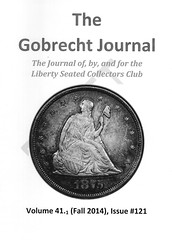 Prior to the publication of GJ #121, Editor Bill Bugert
produced this draft copy of the Journal as a sample to show fellow
members. It contains most of the same content, but ads are not
present. The word “draft” is diagonally featured on the front cover
in a light gray font. The large format expanded layout possibilities,
and offered advertisers the opportunity to easily reuse content
submitted to other large format publications.
Prior to the publication of GJ #121, Editor Bill Bugert
produced this draft copy of the Journal as a sample to show fellow
members. It contains most of the same content, but ads are not
present. The word “draft” is diagonally featured on the front cover
in a light gray font. The large format expanded layout possibilities,
and offered advertisers the opportunity to easily reuse content
submitted to other large format publications.
Lot 8. A Register of Liberty Seated Half Dollar Varieties,
Volume IV, New Orleans Branch Mint, 1853-O WA to 1861-O.
Deluxe Leather-bound edition, copy #10 of 10 bound.
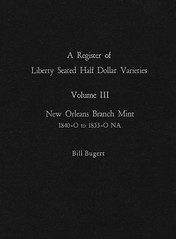 Bill Bugert continues
his masterful analysis of Liberty Seated half dollar die varieties in this, the fourth
volume of the series. The books issued to date are volume I (Carson City pieces
from 1870 to 1878), volume II (San Francisco half dollars from 1855 to 1878),
volume III (New Orleans halves from 1840 to 1853 NA), and volume IV,
covering the remainder of the New Orleans issues from 1853 WA to 1861.
Work on the Philadelphia volumes continues apace as the “Liberty Seated Half
Dollar Summit” meets periodically. This cadre of Liberty Seated half dollar
variety experts has been meeting once or so per year, and, over a week long
period, will studiously examine hundreds of examples. Bill Bugert acts as
“Documenter-in-Chief” and has been publishing these authoritative references
since 2009.
Bill Bugert continues
his masterful analysis of Liberty Seated half dollar die varieties in this, the fourth
volume of the series. The books issued to date are volume I (Carson City pieces
from 1870 to 1878), volume II (San Francisco half dollars from 1855 to 1878),
volume III (New Orleans halves from 1840 to 1853 NA), and volume IV,
covering the remainder of the New Orleans issues from 1853 WA to 1861.
Work on the Philadelphia volumes continues apace as the “Liberty Seated Half
Dollar Summit” meets periodically. This cadre of Liberty Seated half dollar
variety experts has been meeting once or so per year, and, over a week long
period, will studiously examine hundreds of examples. Bill Bugert acts as
“Documenter-in-Chief” and has been publishing these authoritative references
since 2009.
This is a leather-bound copy, copy #10 of ten produced. Bill has generously donated previous leather-bound volumes to LSCC auctions. Previous prices realized: Carson City ($1000), San Francisco ($425), and New Orleans (volume III in the series, $650).
Lot 9. The Gardner Collection: Liberty Seated Half Dimes.
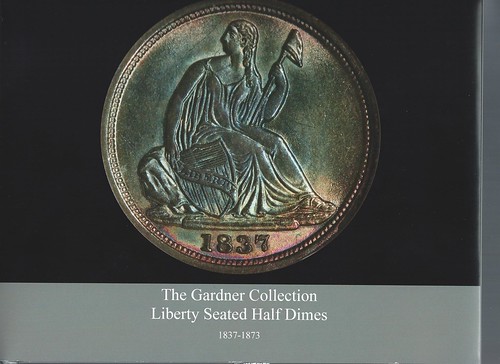
The Gene Gardner collection of Liberty Seated coinage is well known, appearing in a series of Heritage sales beginning in 2013. The first three sales realized over $47 million, and a final sale is scheduled for this fall. Gardner’s sets represent the all-time finest for overall quality.
While the Eliasberg collection included certain ultra-rarities not present here (1884 and 1885 trade dollars, the 1873- CC No Arrows dime, the 1853-O No Arrows and Ray half), Gardner’s collection was clearly superior in the area of uncirculated branch mint pieces.
Furthermore, while Eliasberg mixed proof and circulation strike pieces in his frontline collection, Gardner made a discipline of collecting both types, and, as a result, achieved “definitive” status for both proof and uncirculated formats.
Gardner has been a long time friend to the LSCC and has regularly attended club meetings at major shows. Gardner has generously supported the LSCC collective volumes project, and was elected to the LSCC Hall of Fame in 2014.
Several years ago, Gardner began documenting his frontline collections in a series of photo books. These hardbound books feature full color photography on thick paper. Print runs were limited, typically ten or twenty copies of each volume. These books were distributed to family and friends of Gardner and were never commercially offered.
Gardner personally describes each coin with observations on technical quality, provenance, and die varieties. These books are the definitive record of the definitive collection. Eleven volumes were produced for Liberty Seated coinage as follows:
Half Dimes: Two volumes, one for uncirculated pieces and one for proofs
Dimes: Three volumes, two for uncirculated pieces and one for proofs
Quarters: Three volumes, two for uncirculated pieces and one for proofs
Half Dollars: Three volumes, two for uncirculated pieces and one for proofs
Len adds:
One needs to be an LSCC member to participate, it is $20 to Dennis Fortier at P.O. Box 1841, Pawtucket RI 02862.
For more information about the Liberty Seated Collectors Club, see:
www.lsccweb.org
MORTENSEN ISSUES NUMISMATIC AUCTION CATALOG PRICE LIST
Morten Eske Mortensen of Copenhagen writes:
Interested parties can acquire an Excel file of my new fixed price sales list of 2.000 foreign coin auction catalogues 1950-2015 by writing to me at mem@image.dk
NEW BOOK: ABEL BUELL AND THE CONNECTICUT AND FUGIO COINAGES
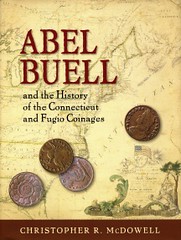 The Colonial Coin Collectors Club announces the latest in its series of publications - Abel Buell and the History of the Connecticut and Fugio Coinages by Christopher R. McDowell. The author examines motivations, achievements and failures of the man Jim Spillman called the single most important figure of Colonial American numismatics. The work, large format, black cloth, dust jacket, 230 pages and well illustrated in color is available for $85.00 (plus $7.25 if shipped) from Charles Davis, P.O. Box 1, Wenham Mass 01984.
The Colonial Coin Collectors Club announces the latest in its series of publications - Abel Buell and the History of the Connecticut and Fugio Coinages by Christopher R. McDowell. The author examines motivations, achievements and failures of the man Jim Spillman called the single most important figure of Colonial American numismatics. The work, large format, black cloth, dust jacket, 230 pages and well illustrated in color is available for $85.00 (plus $7.25 if shipped) from Charles Davis, P.O. Box 1, Wenham Mass 01984.
“Past writers have portrayed Abel Buell as the single most important figure in Colonial American numismatics. Further details regarding the life and multiple careers of this famous Connecticut Yankee are now available in this new, expanded biography of ‘Our American Genius’ by Christopher R. McDowell. This is an informative read for any enthusiast of the Revolutionary and Pre-federal periods, be their interest in numismatics, economy, metallurgy, printing, or history.”
Dr. Philip L. Mossman
Numismatic Researcher and Author
“Chris McDowell presents a comprehensive and compelling reassessment of the career of Abel Buell. There are many new discoveries to be found throughout the pages of this fascinating work. It is essential reading for anyone with an interest in either Connecticut or Fugio coppers, or someone curious about the foundations of early American industry.”
Louis Jordan
Curator of Numismatic Collections
University of Notre Dame
“…. A great book and a must read for the Connecticut and Fugio copper students.”
Jim Rosen
President
Colonial Coin Collectors Club, Inc.
Every now and then historians consider a subject “done,” and no longer worthy of research since all that is known has already been written. More often than not, the subject is far from done and it falls to the non-professional researcher to find new information and make us all look at the subject with new eyes. Such is the case with Christopher McDowell’s new work on Abel Buell, rightly called an American genius.
McDowell deftly separates fact from myth, dismantling some long-held beliefs and paints a portrait of Buell that encompasses FAR more than his involvement with early American coinage. If you are interested in numismatics, early American silver, early weaponry, printing technology, the beginnings of American industry or just want to read the life of a truly original Yankee, then this is a book that will be devoured from cover to cover!”
Jeff Rock Numismatic Dealer
 Christopher McDowell
is a lifelong numismatist and
recognized expert in the area of
colonial coinage with an emphasis
on Connecticut coppers. He has
written several award winning
articles on numismatic topics and
this current work grew from Chris’
interest in the Connecticut Mint
and the man who designed and
struck America’s first official coins.
Christopher McDowell
is a lifelong numismatist and
recognized expert in the area of
colonial coinage with an emphasis
on Connecticut coppers. He has
written several award winning
articles on numismatic topics and
this current work grew from Chris’
interest in the Connecticut Mint
and the man who designed and
struck America’s first official coins.
A graduate of Marshall University and West Virginia University College of Law, Chris served as an officer in the U.S. Army Judge Advocate General’s Corps and was stationed in Korea, Germany, Bosnia, and Kansas. Chris practices law in Cincinnati, Ohio, where he lives with his wife Annah and three children.
Introduction
Part I: THE EARLY YEARS
Chapter 1: The Master’s Apprentice
Chapter 2: Crime and Punishment
Chapter 3: Abel Buell Invents a Lapidary Machine and is Pardoned
Part II: EARLY INDUSTRIAL DEVELOPMENT IN CONNECTICUT
Chapter 4: Steel Production in Connecticut During the Colonial Period
Chapter 5: Abel Buell Establishes America’s First English Type Foundry
Part III: NEW HAVEN
Chapter 6: Abel Buell Sets up Shop in New Haven
Chapter 7: Master Engraver
Chapter 8: Abel Buell’s Second Marriage
Chapter 9: Florida
Chapter 10: Return from Exile
Chapter 11: Privateering
Chapter 12: Other Business Ventures
Chapter 13: Abel Buell’s Third Wife and Rumors of a Fourth
Chapter 14: Abel Buell Reopens His Type Foundry
Chapter 15: Abel Buell Engraves the First Map of the United States of America
Chapter 16: The Churches on the Green
Part IV: CONNECTICUT COPPER COINAGE
Chapter 17: The Problem of Counterfeiting and the Need for a Mint
Chapter 18: The Original Mint Petitioners
Chapter 19: The Connecticut Mint Inspectors
Chapter 20: The Company for Coining Coppers
Chapter 21: Abel Buell’s Coin Press
Chapter 22: Abel Buell Engraves the Dies for the Connecticut
Coppers
Chapter 23: The Men Who Assisted Buell with the Connecticut Copper Dies
and Buell’s Connection with Some of the Dies Used by the
Vermont Mint
Chapter 24: Changes in Ownership of the Connecticut Mint
Chapter 25: The Mark Leavenworth Mint Lease
Chapter 26: James Jarvis Takes Control of the Connecticut Mint
Part V: THE FUGIO COINAGE
Chapter 27: James Jarvis and Samuel Broome
Chapter 28: The Fugio Contract
Chapter 29: Trouble With Copper
Chapter 30: Abel Buell Engraves the Fugio Dies
Chapter 31: James Jarvis’ Efforts to Find a Backer in Europe
Chapter 32: James Jarvis Returns to America and Explains his Failure to Congress
Chapter 33: The End of the Fugio Story
Chapter 34: The State Inquest Into the Connecticut Mint
Chapter 35: Major Eli Leavenworth’s Use of the Connecticut Mint
Chapter 36: Benjamin Buell and the End of the Connecticut Mint
Part VI: INDUSTRIAL ESPIONAGE AND THE TEXTILE INDUSTRY
Chapter 37: Abel Buell Leaves for Europe
Chapter 38: America’s Early Cotton Industry
Chapter 39: Abel Buell’s Cotton Mill
Chapter 40: Abel Buell Falls on Hard Times
Chapter 41: Onions and Ideas
Part VII: CAVALRY SABERS
Chapter 42: Trouble With France
Chapter 43: Buel &Greenleaf
Chapter 44: Abel Buell’s Third Wife Dies
Part VIII: THE FINAL YEARS
Chapter 45: Stockbridge
Chapter 46: Return to New Haven
Acknowledgments
Bibliography of Sources
Index
Appendix
For more information, or to order, see:
MCDOWELL, ABEL BUELL AND THE HISTORY OF THE CONNECTICUT AND FUGIO COPPERS
(www.vcoins.com/en/stores/charles_davis/44/product/
mcdowell_abel_buell_and_the_history_of_the_connecticut
_and_fugio_coppers/599393/Default.aspx)
THE BOOK BAZARRE
NEW BOOK: GUIDE BOOK OF MERCURY DIMES, STANDING LIBERTY QUARTERS, AND LIBERTY WALKING HALF DOLLARS
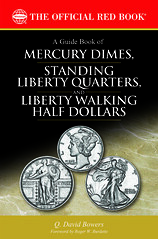 Whitman Publishing has released the first edition of A Guide Book of Mercury Dimes, Standing Liberty Quarters, and Liberty Walking Half Dollars. The 320-page book by Q. David Bowers offers pricing, grading instructions, series histories, and guidance on how to build high-quality collections of these popular coins. It is available from booksellers and hobby shops nationwide, and online (including at
www.Whitman.com), for $29.95. The book can also be borrowed for free as a benefit of membership in the American Numismatic Association, through the Dwight N. Manley Numismatic Library.
Whitman Publishing has released the first edition of A Guide Book of Mercury Dimes, Standing Liberty Quarters, and Liberty Walking Half Dollars. The 320-page book by Q. David Bowers offers pricing, grading instructions, series histories, and guidance on how to build high-quality collections of these popular coins. It is available from booksellers and hobby shops nationwide, and online (including at
www.Whitman.com), for $29.95. The book can also be borrowed for free as a benefit of membership in the American Numismatic Association, through the Dwight N. Manley Numismatic Library.
Mercury dimes, Standing Liberty quarters, and Walking Liberty half dollars were minted between 1916 and 1947—a span of time that included two world wars, the end of the Progressive Era, the Roaring Twenties, and the Great Depression. Today the three silver coins are among the American classics most often found in old-time collections. Thousands of active hobbyists seek them, from casual collectors to die-variety specialists and registry-set competitors.
The new Guide Book provides instructions on how to grade these coins, tips on smart buying, retail values in multiple grades (including Proofs), certified-population data, and an analysis of each date and mintmark. Richly illustrated in full color, the book features high-resolution enlargements for important overdates and other die varieties. Mintages, specifications, and other details add to the book’s importance as a standard reference, and colorful essays set the coins in the context of their historical era.
Eight appendices include biographies of the coins’ designers; histories of the mints that struck them; information about the U.S. Mint directors and superintendents of 1916 to 1947; pattern coins of 1916; misstruck and error coins; the American Silver Eagle redesign that used the Liberty Walking motif; the Mint’s gold 1916–2016 centennial coins; and techniques of smart purchasing and negotiating.
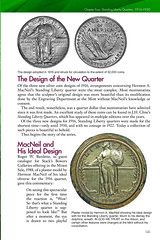

“Bowers is an expert guide,” says foreword writer Roger W. Burdette. “His journeys are always enjoyable, filled with fresh insights and unexpected tangents. This is a book to be read, put aside, then re-read.”
# # #
A Guide Book of Mercury Dimes, Standing Liberty Quarters, and Liberty Walking Half Dollars
By Q. David Bowers; foreword by Roger W. Burdette
ISBN 079484314-X
Softcover, 6 x 9 inches. 320 pages. Full color. Retail $29.95.
Online at
https://www.whitman.com/store/Inventory/Detail/A-Guide-Book-of-Mercury-Dimes-Standing-Liberty-Quarters-and-Liberty-Walking-Half-Dollars-1st-Edition+079484314X
NEW BOOK: APPRAISING YOUR COIN COLLECTION
 The ebook, Appraising Your Coin Collection by Kevin Flynn is now available for free online and can be downloaded or viewed. It is 6*9 and 100 pages. The ebook is being hosted by CoinZip.com.
The ebook, Appraising Your Coin Collection by Kevin Flynn is now available for free online and can be downloaded or viewed. It is 6*9 and 100 pages. The ebook is being hosted by CoinZip.com.
The book stresses the importance of learning the value of your coin collection, especially if you are intending to sell or leaving it as part of your estate. It explains what to expect if you have your coins appraised by someone else and what you should do before and during the appraisal. If appraising yourself, it shows you how to organize, conquer and divide, and what to search for when viewing your coins.
It is very important to separate out those coins that are valuable, and obtain the maximum amount of profit for your collection. If you do not, you might be giving away thousands of dollars to someone else. The book also dives into different avenues to sell your collection, and also the possible tax liabilities if you have a gain. Suggestions are provided on how to test selling a small number of coins to find the optimal way to sell.
As an example of having your coins appraised for an estate, if you collected your entire life and paid $5,000 for your coins. If you sell them for $50,000 right before you die, then you will be required to pay capital gains on $45,000. If you leave your coins as part of your estate and have them appraised at $50,000, if your heir sells them for $55,000, then they are only required to pay $5,000 in capital gains.
The second half of the book goes into most of the primary series that you will see coins that are inherited and presents the rare dates and die varieties that you should search for in each of these series. For example, in the Mercury dimes, the rare dates include the 1916-D, 1921, and 1921-D, 1926-S, and 1945 in Full Band. The main die varieties include the 1942/1 and 1942/1-D overdates, 1941-D doubled die obverse, 1945-D/Horizontal D, and 1945-S/Horizontal S. Knowing which rare dates and die varieties have the greatest value will help when treasure hunting through your coins.
The book can be viewed at: http://www.coinzip.com/appraising-your-coin-collection.php. To download the entire book, scroll to the bottom of the book, hovering your mouse over the bottom right, symbols will appear, click on the symbol that looks like a disk.
BOOK REVIEW: ABEL BUELL AND THE CONNECTICUT AND FUGIO COINAGES
 I received the book last Friday and finished reading it Monday morning. I come away feeling as though I know Abel Buell, not like a brother but more like a neighbor. There are 46 chapters covering 216 pages (not including the Table of Contents, bibliographies &index). Doing the math, these are all short chapters. How it reads is like a photo album with each chapter being a snapshot in time. Each of the chapters gives a concise chronological view of Abel Buell, throughout his life, the many ventures in which he was involved, his low points and high points, the many business partners (and their stories), his family... His involvement in the coinage of Connecticut and the Federal Fugio production is described in detail. Each page is heavily footnoted. Theories are clearly stated as such and facts are supported in the footnotes.
I received the book last Friday and finished reading it Monday morning. I come away feeling as though I know Abel Buell, not like a brother but more like a neighbor. There are 46 chapters covering 216 pages (not including the Table of Contents, bibliographies &index). Doing the math, these are all short chapters. How it reads is like a photo album with each chapter being a snapshot in time. Each of the chapters gives a concise chronological view of Abel Buell, throughout his life, the many ventures in which he was involved, his low points and high points, the many business partners (and their stories), his family... His involvement in the coinage of Connecticut and the Federal Fugio production is described in detail. Each page is heavily footnoted. Theories are clearly stated as such and facts are supported in the footnotes.
Anyone having an interest in Connecticut Coppers or Fugio coinage will enjoy reading about this man who was so important in their production. The sense of what it was like to live in those times is well portrayed. McDowell has succeeded in writing the definitive replacement for Wroth's classic work on Buell.
As a side note, I'm so proud that C4 promotes numismatic education by presentations at our conventions, our quarterly C4 Newsletter and that this book about Abel Buell is the seventh book C4 has published.
For more information, or to order, see:
MCDOWELL, ABEL BUELL AND THE HISTORY OF THE CONNECTICUT AND FUGIO COPPERS
(www.vcoins.com/en/stores/charles_davis/44/product/
mcdowell_abel_buell_and_the_history_of_the_connecticut
_and_fugio_coppers/599393/Default.aspx)
THE BOOK BAZARRE
NOTES FROM E-SYLUM READERS: JULY 19, 201
Sherlockian Numismatists To Meet In Chicago In his Fourth Garrideb blog on Sherlockian numismatics, Greg Ruby writes:
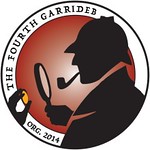 The Fourth Garrideb will celebrate its one year anniversary by holding its first annual meeting at 7 p.m. on Tuesday, August 11, 2015 during the American Numismatic Association’s World’s Fair of Money. This will be a dinner meeting at Gibson’s Bar and Steakhouse at the DoubleTree Hotel, 5464 North River Road, Rosemont, IL 60018. This is directly across the street from the Donald E. Stephens Convention Center, site of the ANA show.
The Fourth Garrideb will celebrate its one year anniversary by holding its first annual meeting at 7 p.m. on Tuesday, August 11, 2015 during the American Numismatic Association’s World’s Fair of Money. This will be a dinner meeting at Gibson’s Bar and Steakhouse at the DoubleTree Hotel, 5464 North River Road, Rosemont, IL 60018. This is directly across the street from the Donald E. Stephens Convention Center, site of the ANA show.
RESERVATIONS ARE REQUIRED. Those that expressed an interest in attending this meeting from our earlier e-mail announcement will be contacted individually to confirm details. If you would like to join us, please contact our Mycroft here (Greg@FourthGarrideb.com).
Speakers Announced for JRCS Meeting In today's issue of the JR Newsletter from the John Reich Collectors Society, Dr. Glenn Peterson writes:
I wish to invite members and guests to come to the JRCS meeting at ANA on Wednesday, August 12th at 8 AM in Room 44 of the Donald E. Stephens Convention Center. We will have two presentations at the meeting. One will be given by our young numismatist member Garrett Ziss on the subject of bust coin images on paper currency. He has found several attributable images of bust coins on the paper money of that era. After Garrett's presentation, David Finkelstein will give a presentation about U.S. Mint history. I am sure members will find these presentations very interesting.
'With the Coin Collector' Follow-Up Regarding the New York Herald Tribune column "With the Coin Collector", Arnold Tescher writes:
Thank you and all those who contributed to my question last week about the NYHT coin column.
To read the earlier E-Sylum article, see:
RALPH ANDREWS BARRY AND 'WITH THE COIN COLLECTOR'
(www.coinbooks.org/esylum_v18n28a16.html)
Richard Picker's Museum Deals Anthony Terranova of New York City writes:
The seeming implication that Richard Picker "picked off" the Ashmolean Museum is offensive.
To read the earlier E-Sylum article, see:
NOTES FROM E-SYLUM READERS: JULY 12, 2015 : Richard Picker's Museum Picks
(www.coinbooks.org/esylum_v18n28a13.html)
Philadelphia (Or Thereabouts) Landmarks on Coins Pete Smith writes:
Some weeks I do okay on your quick quiz. This week, not so much. I could only think of one landmark in Philadelphia that appears on a coin.
So, I read the article. It said, "In time for Independence Day, Phillymag.com listed some of the landmarks memorialized in coinage that can found in the city that helped give birth to the nation — Philadelphia."
The article mentioned Independence Hall, The only one I identified.
The article also mentioned the Liberty Bell Center. I think that is a bit of a stretch. The Liberty Bell Center does not appear on a coin and had not been built when the Liberty Bell appeared on coins.
The article also mentioned the National Constitution Center. It mentioned a 1987 commemorative dollar. The National Constitution Center does not appear on the 1987 commemorative dollar.
The article mentioned the Delaware Tercentenary half. I wasn't thinking that Delaware was in Philadelphia.
Finally, the article mentioned the New Jersey state quarter. Again, I did not think of that as part of Philadelphia.
Meanwhile, it is warm in Minneapolis this week. If you are coming for a visit you might enjoy the Mall of America, the Valleyfair Amusement Park, the Canterbury Park racetrack, the Science Museum of Minnesota or the State Capitol. All are nice places to visit and none of them are in Minneapolis.
To read the earlier E-Sylum article, see:
NUMISMATIC MISCELLANY: JULY 12, 2015 : Quick Quiz: Philadelphia Landmarks on Coins
(www.coinbooks.org/esylum_v18n28a18.html)
The Rocky Mountain News Bill Rosenblum writes:
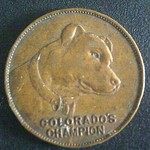 I missed the original article when the Rocky Mountain News token was mentioned.
Back in the 1970s one of my customers wrote the pet column for the Rocky. She and her husband would come into my office 3 or 4 times a year to buy world gold coins. They were very distrustful of banks and kept their gold coins in a box which they placed in a huge bag of dog food believing that their guard dog would protect their coins better than a safe deposit box. Maybe their dog's name was Champion.
I missed the original article when the Rocky Mountain News token was mentioned.
Back in the 1970s one of my customers wrote the pet column for the Rocky. She and her husband would come into my office 3 or 4 times a year to buy world gold coins. They were very distrustful of banks and kept their gold coins in a box which they placed in a huge bag of dog food believing that their guard dog would protect their coins better than a safe deposit box. Maybe their dog's name was Champion.
The Rocky closed its doors 3 or 4 years back and since that time the quality of the Denver Post, without competition, has greatly decreased. However sometime this year the Rocky has started to publish an online edition at http://rockymountainnews.com/
Unfortunately I like an actual paper newspaper so I forget to read the Rocky online. It must be an age thing. On our end of the block there are 9 houses, 3 of the houses are owned by young couples with young children. They don't get a paper delivered in the morning. However the other five houses with people aged 65 and over do get the paper delivered.
To read the earlier E-Sylum articles, see:
NOTES FROM E-SYLUM READERS: JUNE 28, 2015 : Colorado's Champion: Rocky Mountain News Token
(www.coinbooks.org/esylum_v18n26a09.html)
NOTES FROM E-SYLUM READERS: JULY 12, 2015 : The Rocky Mountain News
(www.coinbooks.org/esylum_v18n28a13.html)
1951 Festival of Britain Medal Made of Soap
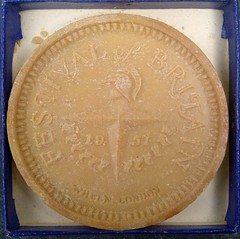
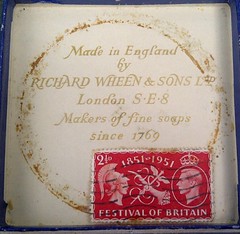
David Pickup writes:
Yesterday I bought a commemorative medallion produced for the 1951 Festival of Britain made of soap! It smells quite strongly of soap even though it is 60 plus years old.
At our meeting (Oxford Numismatic Society) yesterday three members of the society had been to the Festival and remembered the Royal Mint display which included selling commemorative Crowns.
I wonder how many other commemorative medallions were issued made of soap? I don’t want collectors to get in a lather about it and probably I have cleaned up the market.
THE EARLIEST FEMALE U.S. MINT EMPLOYEES
Mark Borckardt writes:
It's not necessarily the correct answer, but I quickly found the following, gleaned from the bi-annual Official Register of the United States. Prior to the 1870s, only officers and salaried personnel were recorded. Beginning in 1873, all employees were recorded:
Elizabeth Wyer was a memorandum clerk at the San Francisco Mint in 1865, earning an annual salary of $1,872. She was born in Ireland, apparently circa 1833. She appeared in the 1862 San Francisco directory as a widow and worked as a “Confectionary,” and was a memorandum clerk according to the 1864 directory.
In the 1870s, there were a number of female Mint employees working in the coining room as coiners and adjusters. In 1871, several female adjusters earned an annual salary of $1,092 in Philadelphia. In 1873, adjusters at Philadelphia earned $1.75 per day, while those in San Francisco earned $1,260 annually.
Pete Smith writes:
According to the Mint "Timeline." two women were hired as adjusters on October 10, 1795. I don't know their names. My study of Mint employees ends with 1793.
1795
October 10. The first two women, Sarah Waldrake and Rachel Summers, are
employed in the Mint as adjusters at 50 cents a day. Their job was to
weigh gold coins and adjust their correct weight by filing.
Pete Smith adds:
1. These women were not just the first women hired as employees of the Mint, but the first women employed anywhere in the Federal Government.
2. Martin Summers was a night watchman at the Mint from 1793 until his death in 1804. He did not have a wife or daughter named Rachel.
3. The women were mentioned in an article in The Numismatist in May, 2010, by Walt Ostromecki. The article says they both left Mint employment in 1801.
To read the earlier E-Sylum article, see:
U.S. MINT FILLS POSITIONS WITH FEMALES, VETERANS
(www.coinbooks.org/esylum_v18n28a25.html)
THOUGHTS ON THE PRINTED WORD IN NUMISMATICS
Regarding Harvey Stack's notes on the Printed Word in Numismatics, Bill Eckberg writes:
While I agree that more and more numismatic information should and will become available online, there will always be the concern that at some point in the future, retrieval will become a problem. How many of us have computers that can still read mini floppy discs? For that matter, how many have anything that can read the larger floppy discs that were actually floppy? LaserDiscs? Betamax video? Reel-to-reel, 8-track or mini cassette tapes? Newer computers can’t even read CDs and DVDs without adding specialized peripherals.
You say these are storage media, not application formats? Do you really think PDF will be around forever? Don’t bet the farm on it. I have documents on my computer that were produced in Microsoft Word so long ago that current versions of Word won’t open them. Books printed on paper 500 years ago, by contrast, are as readable as they were when new. Will that be true of our electronic documents? Again, don’t bet the farm on it.
To read the earlier E-Sylum article, see:
HARVEY STACK ON THE PRINTED WORD IN NUMISMATICS
(www.coinbooks.org/esylum_v18n28a40.html)
WHAT IF CASH HAD BEEN INVENTED AFTER DEBIT CARDS?
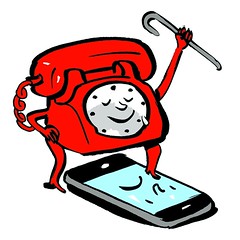 I am dying of thirst because the hapless man in front of me in line is having trouble with his debit card. The way the hapless man in front of me in line is always having trouble with his debit card.
I am dying of thirst because the hapless man in front of me in line is having trouble with his debit card. The way the hapless man in front of me in line is always having trouble with his debit card.
“Where do I punch in my password?” he asks the cashier. I stand behind him, bottled water in hand, dying of thirst, clutching a $5 bill.
“How do I erase it if I made a mistake?” he asks the cashier. I stand behind him, clutching my bottled water and a $5 bill, dying of thirst.
“Oh, I think I do want cash back,” he says. “Should I start all over?”
I stand there behind him, clutching my bottled water and my $5 bill. And a thought occurs to me. What if debit cards had been invented first and cash was invented later? Wouldn’t the person who brought the long green to market be treated with the same reverence as Marconi or Edison or Gutenberg?
“Wait a minute! There’s no password required?” a shocked debit-card user might say, disbelievingly, using cash for the first time.
“No. You just hand them a piece of paper, and they give you change.”
“And there’s no way you can swipe the bill the wrong way? And there’s no way your request can be denied because you don’t have enough cash in your bank account? And there are no overdraft fees?”
“No, no and no.”
“And there’s no way some perfidious cabal of depraved Eastern European gangsters can steal your password and empty your bank account, reducing you to abject penury?”
“No way.”
“Gee. Why didn’t somebody think of that sooner? “
This is the very crux of the enigma. If cash had been invented after debit cards, the public would welcome it as one of the great timesaving innovations of all time.
To read the complete article, see:
The Cutting-Edge Genius of Old Gadgets
(www.wsj.com/articles/the-cutting-edge-genius-of-old-gadgets-1437143832)

MORE ON THE THREE HOURS FOR LUNCH CLUB MEDAL
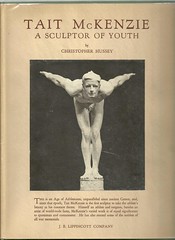
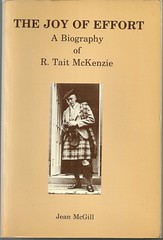
Scott Miller writes:
Regarding the Three Hours for Lunch Club medal, I have seen at least one example in bronze. There are (at arm's reach) two works about Tait McKenzie that mention this medal.
Tait McKenzie: A Sculptor of Youth by (1930) describes the medal and illustrates a plaster cast; despite the 1926 date, the caption attributes it to 1921. The chronological list of works by McKenzie does not seem to list the medal at all.
The list of works in The Joy of Effort: A Biography of R. Tait McKenzie by Jean McGill 1980 places in the 1926 listing and describes it as a cast medal.
To read the earlier E-Sylum article, see:
QUERY: WAS THE THREE HOURS FOR LUNCH CLUB MEDAL STRUCK?
(www.coinbooks.org/esylum_v18n28a21.html)
SMITHSONIAN OPENS NEW NUMISMATIC EXHIBIT
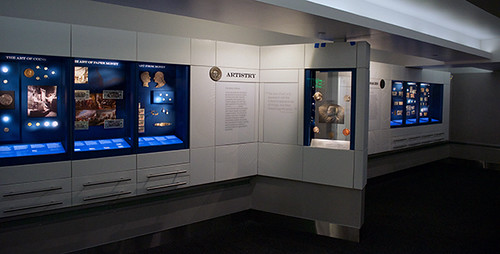
AN EXHIBIT TO BE REMEMBERED
by Harvey Stack
On July 15, 2015 the National Numismatic Collection was returned to the displays at the Smithsonian. For close to a decade, portions of the National Collection were not exhibited as the Museum of American History at the Smithsonian was reduced in size and the museum went through major renovation.
Today, the Collection is housed, in all its glory, in a special exhibit room on the first floor of the Museum. In this location it will be more accessible and seen by many more visitors.
I have been involved–emotionally involved–with the National Collection since the mid-1940s. Being from a numismatic family all such displays called to me. I remember my first visit after World War II when, with my parents and sister, we drove from New York to Washington D.C. and on to Baltimore. Our stop in Washington included a visit to the National Collection.
We found the exhibit in the lower level of the Castle, almost below the street, with large windows helping to illuminate the display. It was arranged in long flat showcases, the coins side-by-side, top and bottom; one had to look down to see them. The overhead electric lighting was so-so at best, and the tags weren’t always legible. We visited the curator, Stuart Mosher, whom my father had known for a number of years, and were escorted about the displays.
For someone who had already developed a major interest in Numismatics, it was exciting to see (as best we could) some of the great rarities in the Collection. But it was hard to learn from the way it was laid out.
In the mid-1950’s, Vladimir Stefanelli and his wife Elvira–who worked for Stack’s for close to a decade–were offered the job (which they took) of Curator of the National Numismatic Collection. Being the academics and students of Numismatics that they were, we could hardly expect them not to take this honor and privilege. Our friendship continued on through their retirements.
As the Collection grew from donations, loans from the Mint Collection (which is now part of the National Collection), private donors and acquisitions by families like ours, we decided to continue to work to make our National Collection the best in the world.
It is with great pleasure that we invite you to visit the new exhibit. Come see what’s been done to enhance your visit to the Collection, and let that education help make you a more proficient collector. I am sure that you will feel closer to your hobby and appreciate what coins have done in the economic world past, present and future.
A NIGHT TO BE REMEMBERED
by Charles Morgan
On the evening of July 15, a veritable who’s-who of the national numismatic scene descended upon Washington D.C. to be present at the Grand Opening ceremony for the new National Numismatic Collection Permanent Exhibit at the Smithsonian Institution’s Museum of American History. In earlier reporting, CoinWeek noted that the new exhibit–which features just a fraction of the Smithsonian’s immense holdings of money, medals, and other related material–opened to the public on July 1. That launch, it seems, proved to be a practice run for the main event, as shortly after the opening the museum’s curators closed the exhibit space for additional tinkering and improvements.
When I arrived at the museum earlier in the day, the exhibit was closed to the public for last-minute preparations, and nothing but the impressive (and expensive) bank vault door was visible to passersby. As I waited for a private tour of the exhibit, I studied the reaction of folks walking by. More often than not, they would take note of the door, study its intricacies, and take photographs of themselves or their families standing in front of it. The door was a big hit!
The idea of committing the financial resources to install this non-functioning but very much real door seemed like a radical idea to those in attendance at the Smithsonian’s 2013 project preview at the Whitman Expo in Baltimore. Especially since the implementation of this plan depended on the coin industry and collector community’s ability to raise the funds necessary to pay for it. Incoming ANA President Jeff Garrett, who has worked with the Smithsonian for years, was instrumental in seeing the project through, lining up significant donations from many of the industry’s major figures.
The new exhibit will no doubt be very popular for casual visitors, but it will also effectively convey the story of money in ways that will indubitably bring new blood into the hobby. What struck me most was the way Collection Curator Ellen Feingold was able to tell that story through themes, capturing money’s significance as a social construct but also in its enduring ability to evolve and change. From seashells to bitcoin and everything in between, this horizon-expanding exhibit is immersive; it breaks through the concept of coins as small metal discs and plays with money’s forms and shapes–even its very definition.
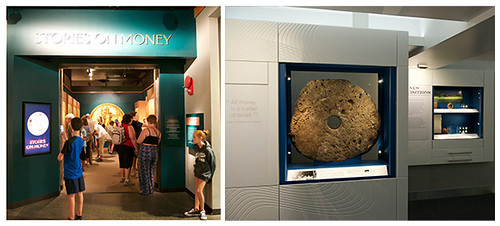
Simply put, this isn’t your grandfather’s National Numismatic Collection Exhibit. Or at least if it is, then it will make him feel like a kid again. I was struck by the joyous expression I captured when Q. David Bowers pulled open one of the many drawers available to visitors.
Inside of each are additional pieces that correspond with the main displays.
My favorite drawer pool featured a 17th-century Russian beard tax token. This remarkable curiosity, an artifact of Imperial social engineering, was issued to entice Russian men to shave so as to make Russian society follow the fashion aesthetics of Western Europe. Hipsters, I presume, will find the piece much to their liking as well.
As the gathering drew to a close, the events’ 150+ guests began to trickle out of the event space. Each was treated to a gift bag. Inside of each gift bag was a poster, a silver medal honoring the Star Spangled Banner and a 2015 Bullion-strike American Silver Eagle encapsulated by NGC, with a special label that reads: National Museum of American History, National Numismatic Collection: The Value of Money Exhibition Opening, July 15, 2015.
Officials at the museum assured me in the afternoon that beginning July 16, the exhibit space would again be open to the public. That the wrinkles had been ironed out and that it was ready for prime time.

Much is written and said in this hobby about coins and museums. One often hears about how rare coins get “impounded” in them. All I want to say about that is that public collections belong to the public. You, to a certain extent, own not one but two 1933 double eagles, and if you make the trip to D.C. you can look at them in person any time the museum is open. In the same way, you own not one but three 1804 dollars. A $100,000 gold certificate is yours as well, as is the most amazing World gold coin collection ever assembled.
Now there’s an exhibit worthy of such a collection.
To read the complete article, see:
Smithsonian Celebrates Opening of New National Numismatic Collection Exhibit
(www.coinweek.com/education/smithsonian-holds-ceremony-celebrate-opening-new-national-numismatic-collection-exhibit/)
To read the complete article, see:
The Evolution of Money, From Feathers to Credit Cards
(www.smithsonianmag.com/smithsonian-institution/evolution-money-feathers-credit-cards-180955602/?no-ist)
THE 1836 JUDD-67 PATTERN GOLD DOLLAR
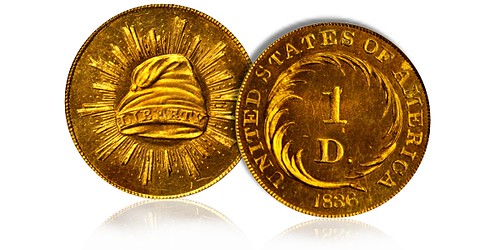
Coinciding with the Coinage Act of 1834 was the discovery of gold deposits in Georgia and the Carolinas in the 1820s and 1830s, presenting an influx of the precious metal into the economy of the Mid-Atlantic region. This ore was shipped north to Philadelphia to be struck into quarter eagles or half eagles. The Act of March 3, 1835, authorized the erection of branch mints in Charlotte, North Carolina, Dahlonega, Georgia, and New Orleans, Louisiana. While the New Orleans Mint produced both silver and gold denominations in moderation, the facilities at Charlotte and Dahlonega were solely dedicated to processing the locally-sourced aurum.
In the interval before the branch mints were up and running, German metallurgist Christopher Bechtler established a private mint in Rutherford County, North Carolina in order to satisfy the demand for circulating coinage. With his son and his nephew as understudies, Bechtler struck coins in the $1, $2.50 and $5 denominations. These smaller, more practical denominations were widely accepted by the public and circulated liberally throughout the Mid-Atlantic.
Observing the popularity of Bechtler’s privately issued gold dollars, Secretary of the Treasury Levi Woodbury advocated that the U.S. Mint produce a gold $1. Though U.S. Mint Director Robert Patterson objected to this suggestion, Woodbury was able to convince President Jackson that it was a worthwhile venture, and Jackson ordered Patterson to have pattern coins struck for evaluation.
Having already expressed his displeasure with the concept, Patterson had the Mint’s second engraver, Christian Gobrecht, suspend work on his now iconic silver dollar and conceive a design for the proposed gold dollar instead. What Patterson didn’t anticipate was that this “belittling” task handed off to Gobrecht would result in the creation of one of the most attractive pattern coins to come out of the U.S. Mint.
Gobrecht’s design, which is now known as the Judd-67 1836 pattern gold dollar, displays a glorious sunburst surrounding a Phrygian or “Liberty” cap with the word LIBERTY inscribed on the central band across the obverse. The opposite side depicts a coiled palm frond encircling the denomination 1 D. with the legend UNITED STATES OF AMERICA around the border and the date 1836 below.
Despite the impressive nature of Gobrecht’s rendering, the U.S. Mint failed to issue a gold dollar of its own until motivated by the outpouring of gold from California in 1849. That 1849 issue wound up depicting James B. Longacre’s Liberty Head design and, while possessing a beauty of its own, it could not truly measure up to the artistic merit expressed on the 1836 Judd-67.
To read the complete article, see:
Gorgeous Gem Judd-67 Pattern Gold Dollar to be Featured at Stacks Bowers Rarities Night in Chicago
(www.coinweek.com/coins/patterns/gorgeous-gem-judd-67-pattern-gold-dollar-to-be-featured-at-stacks-bowers-rarities-night-in-chicago/)
CASSEL'S PATTERN COLLECTIONS OFFERED BY HERITAGE
Two of collector and numismatic author David Cassel’s collections will be offered by Heritage Auctions in conjunction with the American Numismatic Association World’s Fair of Money in Rosemont, Ill., in August.
Cassel is the author of the 2000 reference United States Pattern Postage Currency Coins, and the auction offerings will include his U.S. patterns struck in aluminum and his U.S. postage currency patterns.
Patterns are experimental pieces produced to test new designs, compositions, denominations and coinage concepts. Some patterns become approved coins while other patterns are never adopted. Both of Cassel’s specialities fall into the latter category.
Postage currency patterns were produced following the hoarding of regular issue circulating coinage during the Civil War.
In addition to collecting postage currency patterns, Cassel also collected patterns of various designs and periods whose shared connection is that they are made of aluminum, which was considered an exotic metal in the 19th century.
Cassel’s aluminum patterns include an 1880 Goloid Metric dollar pattern, Judd 1653, graded Proof 66 Cameo by Professional Coin Grading Service; a PCGS Proof 66 Cameo 1885 Snowden dollar pattern, Judd 1749; and a PCGS Proof 66 1885 Coronet double eagle pattern, Judd 1756.
Postage Currency Patterns
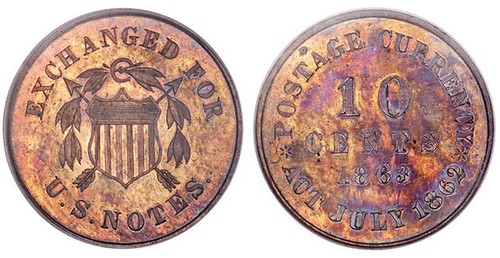
Originally thought to be composed of billon, Cassel’s Judd 326-b postage currency pattern piece is one of two examples in copper
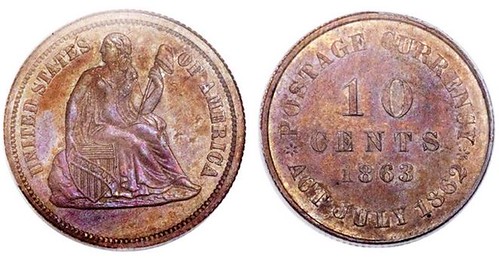
Celebrated collectors R. Coulton Davis, Virgil Brand, King Farouk I of Egypt, Lester Merkin, and Milton R. Friedberg owned this unique copper pattern piece before Cassel

This 1868 dime pattern is believed to have been intended to be dated 1863, but a numeral 8 date punch was inadvertently used instead of a 3, Cassel believes.
Aluminum Patterns

The 1880 Goloid Metric dollar pattern in aluminum is a compositional version for a proposed coinage alloy of gold, silver and copper.
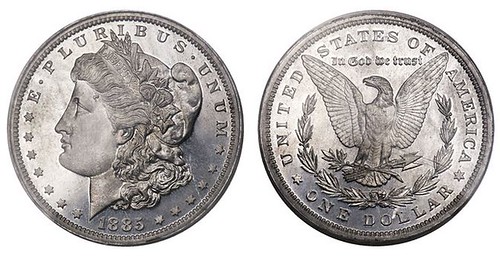
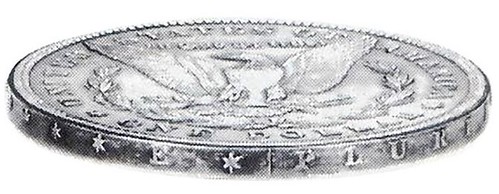
1885 Snowden dollar pattern in aluminum was struck during experimentation by the Philadelphia Mint superintendent toward stifling counterfeiting by placing raised elements on a coin’s edge using a tripartite collar.
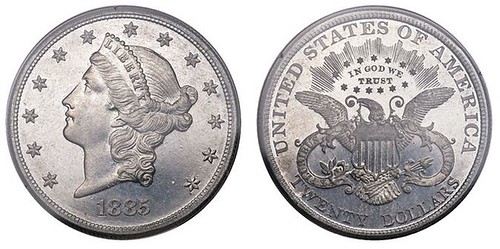
Cassel’s pattern example of two known pieces with the regular designs for an 1885 Coronet $20 double eagle, but struck in aluminum, grades PCGS Proof 66.
To read the complete article, see:
Specialized pattern sets in August sale by Heritage Auctions
(www.coinworld.com/insights/specialized-patterns-sets-in-auction.all.html)
FALSE WESTERN AND DAWSON CITY GOLD BARS
FALSE WESTERN (AND DAWSON CITY, Y.T.) GOLD BARS
by Robert D. Leonard
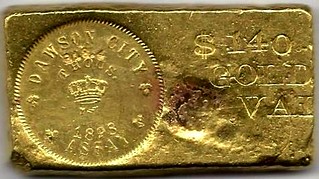
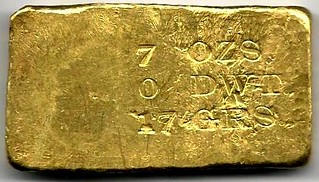
On March 16, 1996 the American Numismatic Society presented T.V. Buttrey with the Huntington Medal in recognition of outstanding achievement in numismatic scholarship. As is customary, he delivered a lecture, though not on one of his usual themes: “False Western Gold Bars,” published with revisions in the American Journal of Numismatics 9, 1997.
In this outspoken critique of an entire genre, he condemned as modern fantasies all Western gold bars that came to market since the early 1950s, the Central America bars excepted: “...it is my personal judgment that the western American gold bars which began to appear in the 1950s are false, all of them, and that they are twentieth-century fabrications contrived to appeal to our interest in the history of the American West.”
To say that this shocking charge was controversial would be an understatement. When Ted Buttrey told me this at the International Numismatic Congress in Berlin in 1997, I couldn’t believe him. All of them? Surely some were genuine. I accepted that many were bogus, but thought that some, at least, must be original. But I became convinced he was right, and he has finally convinced nearly everyone.
One thing that delayed acceptance of his position was that these bars had been sold as genuine by all the leading dealers in the United States: John J. Ford, Jr.; Stack’s; Bowers &Merena; Kagin; NASCA; Rarcoa; and Superior. They were listed in Donald H. Kagin’s Private Gold Coins and Patterns of the United States and some were even included in the “Red Book” for a time. All these dealers objected to Buttrey’s thesis strenuously, and Ford had previously threatened to sue anyone who rejected them as fake. (He successfully prevented Buttrey’s previous article on this subject, “False Mexican Colonial Gold Bars,” from being published in the United States, where they were being sold, and it had to run instead in Academia Mexicana de Estudios Numismaticos.)
Some dealers responded with a paper by Michael Hodder, a consultant for Stack’s and an acolyte of Ford, at the ANS Groves Forum, April 10, 1999. Hodder attempted to refute Buttrey by first questioning his qualifications (a big mistake) and then changing the subject from “gold bars” to “assay bars.” I responded to this with a Guest Commentary in Coin World, May 17, 1999, exposing this as a “straw man” argument; the mixed metal assay bars were noncontroversial and outside the group Buttrey condemned.
Even Hodder admitted that some of the gold bars were of questionable authenticity, but I could not bring myself then to believe that Buttrey was right to condemn them all.
In an ad in Coin World, July 12, 1999, Stack’s - who had a lot to lose if all the gold bars they had sold over the years were exposed as phony - challenged Buttrey to a debate on the subject of “western assay bars” at the 1999 ANA Convention in Chicago, with Michael Hodder representing them. Buttrey accepted the challenge, setting the stage for the “Great Debate.” It was held August 12, 1999 in front of a large audience (both Buttrey and Hodder mentioned me, Buttrey in his presentation, Hodder acknowledging that I was present).
While Buttrey laid out the reasons for doubting the authenticity of the gold bars, showing an error in Hodder’s paper and proving the so-called Brother Jonathan bars were fake, his anger and arrogance - particularly his personal attacks on John Ford and Michael Hodder and announcement of a lawsuit - turned the audience against him, and Hodder could be said to have won the debate. However, others present, particularly Central America curator Bob Evans and Western mining expert Fred Holabird, were satisfied that the gold bars were bogus, and began writing articles and giving presentations exposing the falsity of one piece after another.
Former ANS curator of United States coins John Kleeberg prepared a website with Buttrey, “How the West Was Faked” (http://www.cawa.fr/IMG/pdf/ how.pdf), which laid out the case against authenticity in great detail. John Ford became ill, and his library and correspondence came on the market, some of which was very revealing.
Researcher and author Karl V. Moulton studied this correspondence and published a magisterial work, John J. Ford and the “Franklin Hoard” (the author: 2013). Q. David Bowers read the manuscript for this book and was convinced he had been “had” by Ford. Don Kagin, working on a second edition of Private Gold Coins and Patterns of the United States, wanted to purge his book of the many fakes he had ignorantly included, and began hosting panels at ANA conventions to discuss particular items.
Buttrey and Kleeberg had accused John Ford of orchestrating the gold bar fraud, using his associate Paul Franklin (called Gerow Paul Franklin by Moulton to distinguish him from his son, also named Paul Franklin) to make them (“How the West Was Faked”). However, Moulton is not convinced (though he may have tempered his views because he depended on the cooperation of Paul Franklin’s son); he suggests the possibility of other forgers supplying Franklin. Paul Franklin did admit to making a few fantasy items for Ford at different times, though.
So it may well be that Ford, who thought that he was smarter than anyone, may himself have been the dupe (at least for a time); if so, then Paul Franklin’s letter to him of November 23, 1964 was possibly the greatest communication ever made by a confidence man to his mark. In it, Franklin claimed that no one he had sold a coin to had ever returned it, but admitted that his activities had led him to being accused of operating the “Massapequa Mint” (he lived in Massapequa, NY, for a time) and said that he was being unjustly ridiculed and defamed. In any case, it certainly worked; Ford responded on December 1, stating “I realize that it was written from the heart.” He also indicated that he still had confidence that the “Franklin Hoard” of U.S. Assay Office of Gold double eagles, then under attack, was genuine, and asked Franklin to investigate further. (These coins were condemned by ANA authenticator J.P. Martin in 1994 and were positively proven false in a Pioneer Gold Forum sponsored by Kagin’s at the 2008 ANA convention.)
Whoever made them, all these fake gold bars passed through the hands of one man: Paul Franklin. While a Paul Franklin pedigree is not a sure-fire sign of falsity, it does not inspire confidence. In the summer of 1955 he returned from a trip to the West with several items that were previously unknown (as were all his offerings): among these were an Adams &Co. $54.33 gold ingot, 1851; a James King of William $20 gold piece (also supposed to have been made in 1851); and a $140 Dawson City, Y.T. gold ingot dated 1898 (Moulton, p. 255).
The James King of William $20 ingot is illustrated in the 13th edition of A Guide Book of United States Coins, 1960 (the Red Book), and - despite having a loop attached, as though it had been preserved by being made into a fob - has no chance of being authentic; the name is given as “Jas. King of William &Co.,” but King never used this style: he was always “James King, of Wm.” (Evidently the forger read about King in a history of San Francisco without realizing his business style; besides his personal name being rendered wrong, there was no “& Co.” either.) Also, he was a banker, not an assayer, and would never have issued an “assay bar.” As for the Adams and Dawson City bars, in each case the value is incorrect.
The Adams &Co. bar is stamped 57 1/12 DWT $54.33, .881 fine. But this weight of gold would be worth that much only for a gold value of $21.61/oz.; its true value would be $51.98.
The “Dawson City, Y.T.” bar is even worse: $140 Canadian = $140.00 U.S. at the time. The ingot is said to weigh 7 OZ. 0 DWT 17 GRS, or 7 x 480 = 3360 grains + 17 grains = 3377 grains. It is supposedly only .9184 fine, so it contains only 3101.44 grains of pure gold. (I will ignore the silver because the fineness is so high.) Dividing by 480 (the number of grains per ounce), we have 6.46 oz. pure. Multiplying by 20.6718 (the official gold price) gives $133.57, not $140.00. So this ingot “carries its own credentials” - as a fake. Here the gold is calculated on a value exactly $1 per ounce too high - $21.67. Obviously the forger forgot what the gold price was then, using two similar, but different prices for the Adams and Dawson ingots. These are among 28 bars with incorrect valuations. Genuine bars are normally accurate pretty much to the cent.
John Ford paid $450 for the Dawson $140 bar, then sold it to the Norwebs for $5,250 August 21, 1955 (Moulton pp. 257, 263) - a nice profit.
A second “Dawson City, Y.T.” bar exists (Scott A. Simpson and Leslie C. Hill, Yukon Trade Tokens, Vancouver Numismatic Society, 1979, p. 22). This is overdated 1899/8, with a value of $130 and with an additional counterstamp of the Dawson branch of the Bank of British North America. This bar is not in “How the West Was Forged,” and Simpson and Hill do not give a weight, so the accuracy of the value shown cannot be checked. But the additional counterstamp is a touch found on other Paul Franklin bars: many of the false Mexican Colonial bars bear an additional counterstamp (of impossible date), and the Argenti &Co. bar he sold has additional counterstamps of A. Humbert, assayer and Schulz & Co.
To summarize: The Dawson City, Y.T. 1898 gold bar was sold with a group of California gold bars dated a half century earlier by the man who supplied all of the gold bars denounced by Ted Buttrey and others. There is nothing to connect it to Canada or the late 1890s. And the value stamped is based on a gold value $1 per ounce too high. It is a Paul Franklin fantasy of 1955.
Sources:
Kagin, Donald H., Phd.; Private Gold Coins and Patterns of the United States, 1981.
Kleeberg, John M., How the West was Faked: False Western Gold Bars and other Forgeries ( http://www.cawa.fr/IMG/pdf/how.pdf).
Moulton, Karl V.; John J. Ford and the “Franklin Hoard”, 2013.
Simpson, Scott A. and Leslie C. Hill, Yukon Trade Tokens, Vancouver Numismatic Society, 1979.
Dick Hanscom wrote in the issue:
To say I was surprised to learn that the Dawson City gold bars were fake (fantasy, fabrication, false - take your pick), would be an understatement. I had heard of the Ford-Franklin controversy, but had not heard that the Dawson City ingots were part of that group. Robert Leonard has done a nice job documenting their connection, and pointing out their inadequacies.
PRATT FAMILY HISTORIAN CYNTHIA KENNEDY SAM
The timing of the piece by Joseph Esposito resonates with me because of my recent research into the numerous works of Bela Lyon Pratt, and the extensive historical work done by his Granddaughter Cynthia Kennedy Sam of Cambridge, Massachusetts. Sadly, Cynthia passed away June 8, 2015 after struggling to recuperate from a brain hemorrhage earlier this year.
 Bela Lyon Pratt was the maternal Grandfather of Ms. Sam, a Grandfather she sadly never met. Pratt died at the much too young age of 49 in 1917 from heart failure. In his last weeks he knew he was ill, and through his letters he expressed a love for life and family, and the positive aspects of beautiful things surrounding him during his last days. Cynthia's relationship with this man she never met had an ethereal quality, getting to know him through a thousand letters he wrote weekly to his mother and family members, stories told by her mother and relatives, and the legacy of 180 works of art carefully designed and sculpted that are on exhibit today through the museums and public spaces around New England and Washington, DC.
Bela Lyon Pratt was the maternal Grandfather of Ms. Sam, a Grandfather she sadly never met. Pratt died at the much too young age of 49 in 1917 from heart failure. In his last weeks he knew he was ill, and through his letters he expressed a love for life and family, and the positive aspects of beautiful things surrounding him during his last days. Cynthia's relationship with this man she never met had an ethereal quality, getting to know him through a thousand letters he wrote weekly to his mother and family members, stories told by her mother and relatives, and the legacy of 180 works of art carefully designed and sculpted that are on exhibit today through the museums and public spaces around New England and Washington, DC.
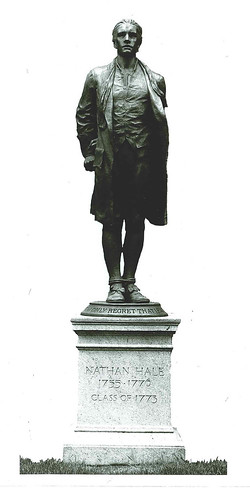 Cynthia Sam was the Pratt family historian, fully dedicated to the preservation and dissemination of information about the history and works of her talented grandfather, a true artistic prodigy from the age of a toddler. She organized and assembled an impressive website documenting much of Pratt's personal history, his works and correspondence. Throughout the years she wrote historical pieces about Pratt and his designs and involvement in the creating of the $2.50 and $5 Gold Indians that are unique in American Numismatics. These popular quarter and half eagles with the sunken relief or incuse designs are a true piece of Americana never to have been replicated. Ms. Sam's articles have appeared in Coin Age magazine and her lectures were given throughout New England.
Cynthia Sam was the Pratt family historian, fully dedicated to the preservation and dissemination of information about the history and works of her talented grandfather, a true artistic prodigy from the age of a toddler. She organized and assembled an impressive website documenting much of Pratt's personal history, his works and correspondence. Throughout the years she wrote historical pieces about Pratt and his designs and involvement in the creating of the $2.50 and $5 Gold Indians that are unique in American Numismatics. These popular quarter and half eagles with the sunken relief or incuse designs are a true piece of Americana never to have been replicated. Ms. Sam's articles have appeared in Coin Age magazine and her lectures were given throughout New England.
The Bela Lyon Pratt Study room is named in honor of this former Yale student, whose legacy includes a life sized bronze statue of Nathan Hale on the Yale campus. Among his other notable works are the spandrel sculptures above the entrance to the Library of Congress, and reliefs that adorn the walls of the Thomas Jefferson reading room in the Library and the monumental sculptural statue of Philosophy as a central figure in the Jefferson reading room.
The dedication of Cynthia to the memory of her Grandfather I find inspirational. Getting to know a family member long gone so incredibly well speaks of a love passed on by a parent who planted the seed for continuity. She was fortunate to have a great abundance of documentation to allow for discovery, but the flame that burned within her is testament to a bittersweet love and dedication rarely found. Cynthia Kennedy Sam was a unique and special link in a direct chain to a truly great American sculptor. Although often seen in the shadow of his early mentor Augustus Saint Gaudens in numismatic circles, Pratt stood head and shoulders above most sculptors of his generation, a legacy Cynthia worked ever so diligently to educate people about him.
In memory of Cynthia Kennedy Sam, April 18, 1936 to June 8, 2015
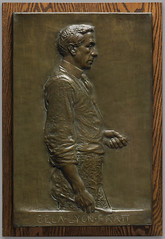

To visit the Pratt web site, see:
www.belalyonpratt.com
To read the earlier E-Sylum article, see:
A VISIT TO YALE’S COIN AND MEDAL COLLECTION
(www.coinbooks.org/esylum_v18n28a19.html)
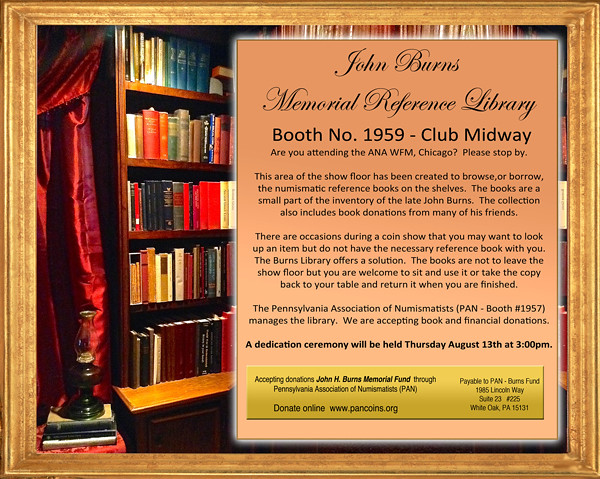
GOLD COIN USE IN THE EAST IN 1896
In my continuing quest to gather contemporary references regarding the use of gold coins in commerce, I recently became acquainted with The North American Review, which, in its December 1896 edition featured two articles regarding the current state of money in the United States, an issue that had featured prominently in the national election of the previous month.
The first is “Has the Election Settled the Money Question?” by Williams Jennings Bryan, who had just lost the election in the first of his three attempts, as the Democratic candidate, to become President of the United States.
His article in favor of bimetallism and the “free” (unlimited by statute) minting of silver coins was rebutted by a three-part article, “Reform of the Currency.” The first part was by the president of the Indianapolis Board of Trade, the second by the president of the New Orleans Chamber of Commerce; and, the third part was written by Hugh Craig, president of the San Francisco Chamber of Commerce.
As a Californian, Mr. Craig would have been accustomed to the daily use of gold coins in commerce, as Californians refused to use Greenbacks when they were introduced in 1862 and resisted the use of federal currency (even after convertibility into gold was enacted into law as of January 1879) until the US Treasury restricted the use of gold coins in commerce during World War I.
Mr. Craig writes:
I have been amused greatly at the way in which Eastern people talk of “solid” money, considering how little they make use of it, preferring, apparently, fiat paper.
A neighbor of mine tells me of a Californian not very long ago entering a shoe-store in New York and purchasing a pair of slippers. The price was seventy-five cents. He handed the clerk a twenty-dollar gold piece, and noticed the typewriter [the person who did the typewriting], the accountant, the salesman, and the “boss” with their heads together. After consultation the clerk approached the Western man, handed him the twenty-dollar gold piece, and took back the slippers! They were positively afraid to give the change, fearing that the coin was “bogus.”
The same thing happened six months ago in a hat store in Philadelphia, where one of my neighbors tendered a twenty-dollar gold piece in payment of a two-and-a-half-dollar hat. The clerk returned from the cashier’s desk and said that “they did not have the change until the proprietor returned from his lunch.”
In November last, the writer was a delegate from the Chamber of Commerce of this city to a convention of Ship Owners and the National Grange, at Worcester, Mass. My hotel bill was sixteen dollars; I laid on the counter a twenty-dollar gold piece, which the clerk first tried with his teeth, then rang on a glass-plate, and said: “You are from California, sir, are you not?” To which I relied in the affirmative.
“This is gold?”
“Certainly,” I said.
By this time there had gathered around me not less than half a dozen men, who, by their looks of interest, had never before, apparently, seen a twenty-dollar gold piece. The change handed to me was soiled, dirty paper, instead of clean, white silver.
Now, clearly Mr. Craig is trying to make a point, and, I have had an interesting interaction or two with a New York City deli cashier when I’ve offered to pay for my $8 lunch with a $100 bill, so it would have been interesting to see how the New York shoe store and the Philadelphia hat store would have reacted to a half eagle instead of a double eagle. However, I think Mr. Craig neatly captures the contemporary attitudes of the two coasts: one that used gold coins in daily commerce and one that, apparently, did not.
The issues of The North American Review, along with many other interesting 19th century periodicals and books, are available in the Making of America section of the Cornell University Library’s website.
To read the December 1896 issue of The North American Review, see: http://digital.library.cornell.edu/cgi/t/text/text-idx?c=nora;cc=nora;view=toc;subview=short;idno=nora0163-6
For a discussion of how Californians reacted to the introduction of Greenbacks, see: 1) “Legal Tender Notes in California” in the October 1892 issue of The Quarterly Journal of Economics, which has been made available by JSTOR’s Early Journal Content program: http://www.jstor.org/stable/1883758?seq=1#page_scan_tab_contents and Chapter Four of The Treasure Ship S.S. Brother Jonathan by Q. David Bowers.
QUERY: ISLE OF MAN COINS PROVENANCE SOUGHT
Peter Preston-Morley of Dix Noonan Webb writes:
I am endeavouring to research the provenance of two Isle of Man coins, a Peel Castle 5 shillings and a 2 shillings and 6 pence, which I am led to believe might have been lots 3426 and 3427 in the auction of the so-called 'Sussex Collection', auctioned by Bowers &Merena in June 1990. As Dave Bowers tells me he now has no access to his firm's catalogues from that era, I wonder if one of your readers may have a copy of the catalogue that they could check for me?
It's entirely possible that these coins may have passed through a US auction in the 1970s, so 'Sussex' may be a wrong-headed notion. Any suggestions or ideas very welcome!
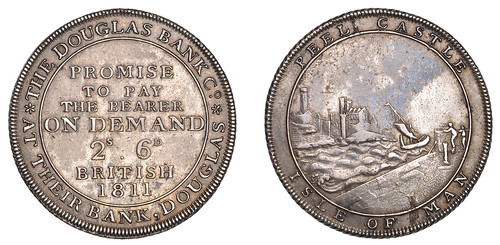
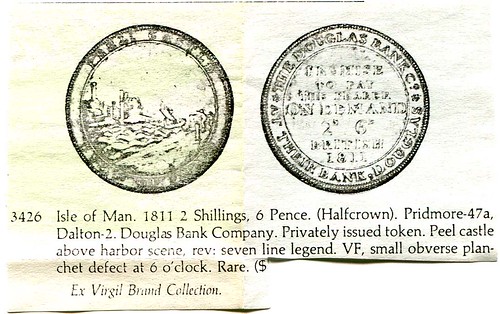

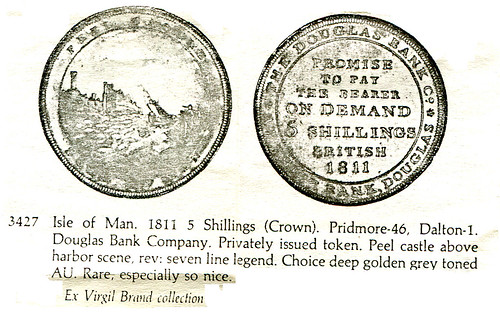
MORE ON BERGRECHNUNGSMARKE
Last week David Pickup asked about the following item. He wrote: "It is an interesting looking piece but I have no idea what it is!"
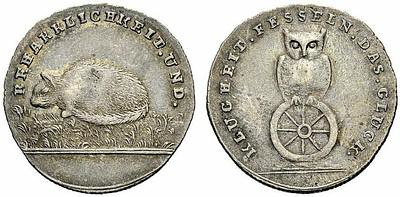
Tom Casper writes:
In the 7-12-15 issue of E-Sylum, under the heading of 'What Are Bergrechnungsmarke?', I recognized this token from a piece in my collection. My token is a variety of that token, showing a full face cat. Attached are scans of my piece. It appears to be silver, 23mm with a reeded edge. A loose translation of the legends read, "Perseverance and wisdom tied together with luck".
I found one entry on the internet picturing this token. It was listed in a 2013 auction by the Emporium Hamburg Auction. The cataloger listed this token as from the city of Clausthal in the Harz Mountain region of Germany. It sold for 70 Euro. To see the complete catalog description, go to their website, https://www.numisbids.com/n.php?p=lot&sid=433&lot=1403
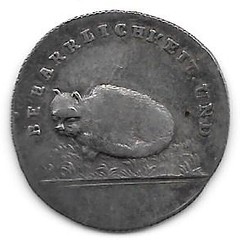
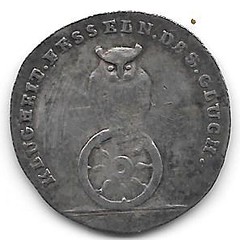
Tom Casper's Piece
Henk Groenendijk writes:
The term “Bergrechnungsmarke” is listed in: Wolfgang Hasselmann: Marken und Zeichen Lexikon, Lexikon für die im deutschsprachigen Raum aus Metall geprägten Marken und Zeichen. Bergrechnungsmarke is described as (translated): 'Tallies used in mining to account for delivered ore, waste material or for any other work. Served as a basis to determine the wages of miners.'
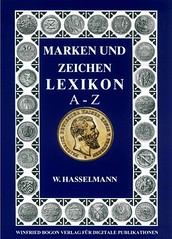 This “Marken und Zeichen Lexikon” was issued as a CD-ROM. It consists of: Lexikon A – Z (p. 1 - 1604), Background information (p. 1605 – 1976) and Tables (1 – 234). Thousands of tokens are illustrated. ISBN-10: 3936059284. The cover is shown here.
This “Marken und Zeichen Lexikon” was issued as a CD-ROM. It consists of: Lexikon A – Z (p. 1 - 1604), Background information (p. 1605 – 1976) and Tables (1 – 234). Thousands of tokens are illustrated. ISBN-10: 3936059284. The cover is shown here.
The token is also illustrated in the Lexikon where the following description is given: “Beharrlichkeit und Klugheit fesseln das Glück, (Harz, um 1805)” Which can be translated as: "Perseverance and wisdom shackle Luck", (Harz region of Germany, issued about 1805). The legend is nicely depicted on the token by a cat lying in wait (perseverance) and an owl (wisdom) sitting on a wheel (wheel of fortune).
No further information about this token is given in the Lexikon. I found several references to his token. One of these is in: Münz- und Medaillen-Kabinett des Grafen Karl zu Inn- und Knyphausen, Hannover 1872, Supplement 1875. (CS9301) under the heading “Bergrechnungsmarke”. The description is as follows:

The token is described as made of silver, the weight is given as 3/16 loth, which equals 2,92 gram. Three different dies are recorded.
As the token is made of silver it will not have been used by the miners. It likely is either an off-metal strike or a special issue for the directors or administrators of the mine.
I was unable to find any information about a catalogue called Elbesh.
David Pickup adds:
My thanks to the correspondents. I wonder how the cat got to Aylesbury!
To read the earlier E-Sylum article, see:
NOTES FROM E-SYLUM READERS: JULY 12, 2015 : What are Bergrechnungsmarke?
(www.coinbooks.org/esylum_v18n28a13.html)

COMMEMORATIVE MEDAL SELECTIONS FROM BALDWIN'S
France, The Execution of Marie Antoinette, 1793

France, The Execution of Marie Antoinette, 1793, Copper Medal by C.H. Küchler, bust left, her hair tied high, rev the Queen seated in the tumbril being taken through the crowds to the guillotine, 48mm (Pollard 4; Hennin 533; Julius 331). Minor contact marks, good extremely fine.
To view the complete item description, see:
Marie Antoinette, 1793.
(www.baldwin.co.uk/marie-antoinette-1793.html)
Proposed Commercial Treaty with Spain, 1666
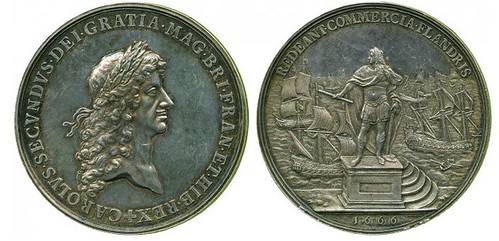
Charles II (1660-1685), Proposed Commercial Treaty with Spain, 1666, Silver Medal by J Roettier, + CAROLVS SECVNDVS DEI GRATIA MAG BRI FRAN ET HIB REX, long haired laureate bust right, rev REDEANT COMMERCIA FLANDRIS, a statue of Charles as a Roman general, behind him a busy sea filled with trade shipping, 56mm (Eimer 236; MI i 517/162). Extremely fine.
To view the complete item description, see:
Proposed Commercial Treaty with Spain.
(www.baldwin.co.uk/proposed-commercial-treaty-with-spain.html)
India, Calcutta Agricultural Show, 1864

India, Calcutta Agricultural Show, 1864, SPECIMEN Bronze Medal by JS and AB Wyon, 64mm (Pudd 864.5. Good very fine, a specimen.
To view the complete item description, see:
India, Calcutta Specimen Medal.
(www.baldwin.co.uk/india-calcutta-specimen-medal.html)
THE PAPER MONEY ART OF VICTOR DUBREUIL
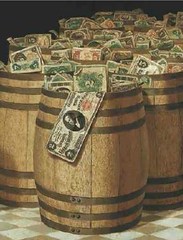 The late 19th century trompe l’oeil artist Victor Dubreuil is certainly enigmatic, as are the paintings depicting currency contemporary with his era that he created.
The late 19th century trompe l’oeil artist Victor Dubreuil is certainly enigmatic, as are the paintings depicting currency contemporary with his era that he created.
His work occupies a prominent place among trompe l’oeil still life painters working in New York during the last quarter of the 19th century, largely because he signed his paintings, but much of his life remains a mystery. Today he’s best known for his depictions of money, but why was he obsessed with this theme?
Some believe that the artist’s obsession with money stemmed from the fact that he didn’t have any throughout his life, but that’s conjecture, as are many elements of his life. Even his date of birth is debated, with some authorities providing a birth year of 1842 and others pointing to 1846.
 What’s known is that he was active as an artist in New York from around 1880 to 1900, before returning to France, where his date of death is unknown.
What’s known is that he was active as an artist in New York from around 1880 to 1900, before returning to France, where his date of death is unknown.
His depictions of money were at times so accurate that the Secret Service took an interest in his work, and it is suspected that his paintings (along with the paintings of his contemporaries) may have run afoul of counterfeiting laws. His works today are collected by museums but appear on the market with enough frequency to be accessible to collectors.
His biography and oeuvre together create a fascinating picture of the various elements impacting paper money in the United States during the late 19th century.
In some paintings he used trompe l’oeil illusionistic painting techniques to depict objects, placing them in context with one another to convey complex allegories that related to social elements of the time and tied into his interest in leftist politics.
Other paintings seemed to be created more for the art market and for collectors who enjoyed his ability to fool the viewer and paint illusions of money.
The owner of the saloon, William Roach, was a devoted patron of Dubreuil, and his establishment was the home of fun, merriment and frequent scams aimed at separating gullible people from their money.
Dubreuil’s paintings were placed around the saloon, in the words of one contemporary writer, “to impress visiting ‘guys’ with ideas of untold wealth.” The visitors were generally from outside the United States and what made the scams successful was that the scam involved counterfeit money. As such, the victims of the scam could not report those who deceived them to the police without themselves being incriminated as purchasers of counterfeit money.
A contemporary newspaper, The New York Herald, reported on one scam, writing that the paintings lining the saloon’s walls were “done by an old man who represented a million dollars on canvas three feet square for a fee of twenty dollars or so.” Dubreuil was upset by this characterization, replying in a letter to the editor, “I painted the pictures referred to but was paid a great deal more than the sum mentioned and never believed, nor do I now believe, the pictures were intended to further any evil purposes. As I am well known on the west side as the painter of these pictures I trust, out of justice to me, you will print the above.”

To read the complete article, see:
Temptation, illusion and deception: Dubreuil's paper money art
(www.coinworld.com/insights/temptation--illusion-and-deception--dubreuil-s-paper-money-art.all.html)
GEORGE CRUIKSHANK'S NOTES
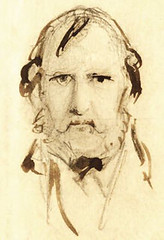 At the time,
most people in England’s
lower classes
were illiterate, making
them easy targets
for fraud, especially since the
small-denomination
bills (the only ones
circulating among
the poor) were new
and unfamiliar.
At the time,
most people in England’s
lower classes
were illiterate, making
them easy targets
for fraud, especially since the
small-denomination
bills (the only ones
circulating among
the poor) were new
and unfamiliar.
Adding to this fiscal stress was a law that made forgery punishable by death. The ruling, however, did not differentiate between counterfeit producers, distributors or handlers. Those who were caught with fake currency ... could be executed.
The result was a virtual bloodbath. From 1783 to 1797, only four people were prosecuted for forgery, which was considered a white-collar crime. However, from 1797 to 1821, more than 2,000 prosecutions and 300 executions (about one-third of all executions during this period!) were carried out exclusively against members of the working classes.
Understandably, this caused public outrage, especially since the Bank of England refused to improve the quality of its notes or change its stance on counterfeiting.
The public’s anger was, in part, expressed through caustic cartoons and pamphlets. In 1818 satirical cartoonist George Cruikshank (1792-1878) produced one of the most famous protests in the form of a bank note that lampooned the Bank of England’s paper currency.
The Edward C. Rochette Money Museum is fortunate to own a set of documents related to this story, given to the ANA as part of the 1984 J. Roy Pennell donation. It includes the forged note that inspired Cruikshank’s specimen; his satirical creation; his original sketch for the piece; and a copy of an article he wrote in 1876 about his role in ending the injustice during the Bank Restriction period.
In the end, the British government rescinded the Bank Restriction Act and resumed specie payments in 1821, making Bank of England notes fully convertible into coin—but only for economic reasons. The severe laws were not changed until 1831, but forgery prosecutions dropped drastically after 1821.
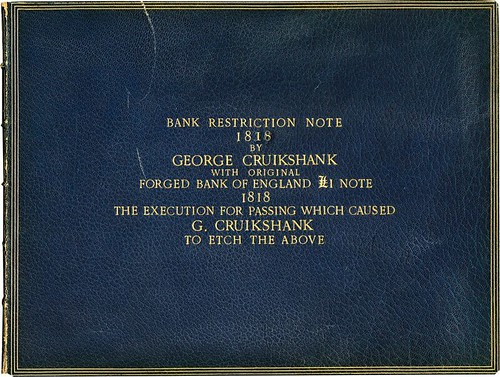
Cover of the Pennell donation
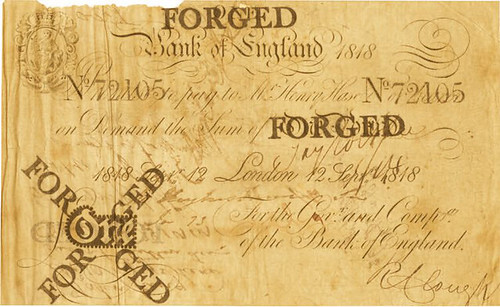
The Forged Note that Inspired Cruikshank's Specimen
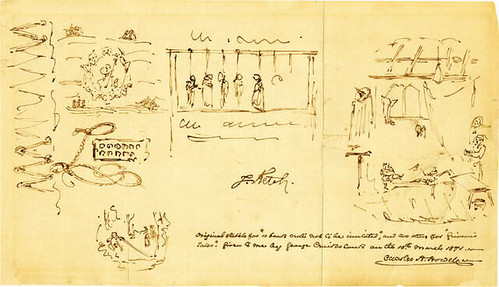
Cruikshank's Original Sketch
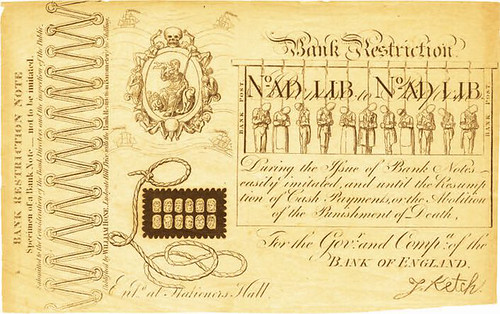
Cruikshank's Note
For more information on the American Numismatic Association, see:
www.money.org
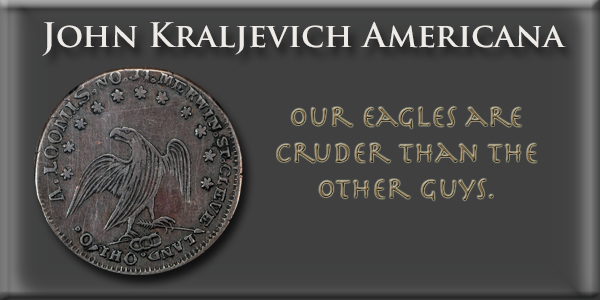
ROYAL MINT OFFERS PRINCE GEORGE'S SECOND BIRTHDAY COIN

Dick writes:
While I think this is getting carried away, I do l like St. George and the Dragon in this one.
To commemorate Prince George's second birthday next week the Royal Mint will release a limited edition sterling silver £5 coin featuring the legend of St George and the dragon.
The Duke and Duchess of Cambridge's son will turn two on July 22 and the silver £5 coin has been struck to mark the event.
The coin features a contemporary re-imagining of the St George and the dragon legend by artist Christopher Le Brun while the other side features the current portrait of the Queen by Jody Clark.
Priced at £80 and limited to just 7,500 coins, its design has been approved by proud parents William and Kate, the Queen and Chancellor George Osborne.
St George is a familiar figure on British coinage, first appearing on certain gold coins issued during the reign of Henry VIII.
The classic St George and the dragon image created by Benedetto Pistrucci in 1817 has graced the coins of almost every monarch since George III, and the Royal Mint says Le Brun's composition applies a 'dynamic and new approach to the portrayal of the classic tale'.
The Royal Mint will also be minting limited edition 'strike on the day' sovereigns to commemorate the young Prince's birthday.
To read the complete article, see:
Prince George’s second birthday to be celebrated with release of commemorative silver £5 coin depicting St George and the dragon
(www.dailymail.co.uk/news/article-3161440/Prince-George-s-birthday-celebrated-release-5-coin.html)
WHY ARE SOME UK COINS MAGNETIC?
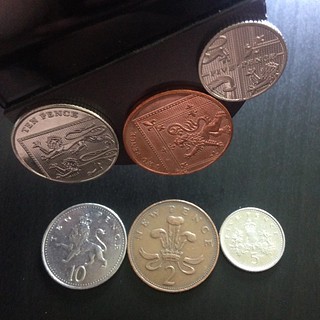 From time to time we’re asked the question, ‘Why are some coins magnetic?’ It’s one of those interesting facts that you seem to just stumble across. I discovered it when a loose coin stuck to the back of a fridge magnet in a drawer! So, let’s take a look at the science behind it and some fun facts we found along the way…
From time to time we’re asked the question, ‘Why are some coins magnetic?’ It’s one of those interesting facts that you seem to just stumble across. I discovered it when a loose coin stuck to the back of a fridge magnet in a drawer! So, let’s take a look at the science behind it and some fun facts we found along the way…
If you were to take a magnet to the ‘smaller’ coins in your change today, you will find that some of them stick. What, I suppose, is interesting about this is that only some of the coins are magnetic… Why aren’t all of them?
A quick Google search will uncover the official explanation, which can be found on both royalmint.com and the Royal Mint Museum’s website. In short, the composition of 1p and 2p coins was changed from bronze to copper-plated steel in 1992 and the composition of 5p and 10p coins was changed from cupro-nickel to nickel-plated steel in 2011. The common denominator? Steel.
The ‘Copper’ 1p and 2p coins were traditionally made from a bronze alloy of copper, tin and zinc. However, since September 1992 they have been made from copper-plated steel. Both types are the same colour, weight, diameter and design and circulate together, but it’s the new copper-plated steel coins that are attracted to magnets. The iron content in the steel core is what makes them magnetic.
Since January 2012, the ‘Silver’ 5p and 10p coins have also been made from a plated steel, in turn making them magnetic. While they changed more recently than the ‘coppers’, you will actually find that a higher percentage of 5p and 10p coins are magnetic. This is because in 2013 The Royal Mint began a programme to recover old 5p and 10p coins from circulation. Since then some 330 million of the new plated steel coins have been issued in their place.
As people have discovered the magnetic property of the coins in their change, many have tried experimenting to see how far they can push the boundaries of what can be done with them.

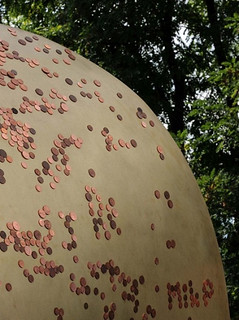
This sculpture called ‘Drop’ by Paul Cocksedge, created in 2010, is magnetic and encouraged passers-by to attach their unwanted pennies to its surface in aid of charity.
To read the complete article, see:
Why are some UK coins magnetic?
(http://blog.royalmint.com/why-are-some-uk-coins-magnetic/)
MONEY TALKS: THE OTIS B. WIGHT COLLECTION
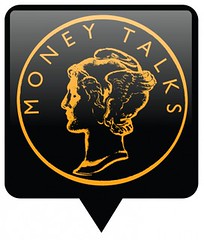 Larry Gaye, Numismatist and Portland Oregon area C4, EAC, CTCC, and MCA member will be giving a talk at the ANA show in Chicago this summer. The talk is entitled, “The Otis B. Wight Collection of Washingtonia and Early U.S. Political Medals in the Portland Art Museum”. This is an exceptional collection of material donated to PAM in 1913. Dr. Wight was a physician and early pioneer of the use of X Ray's in medicine at Oregon Health Sciences University, the medical school and research hospital of Oregon State University. He was a director of PAM prior to the donation of his collection to the museum.
Larry Gaye, Numismatist and Portland Oregon area C4, EAC, CTCC, and MCA member will be giving a talk at the ANA show in Chicago this summer. The talk is entitled, “The Otis B. Wight Collection of Washingtonia and Early U.S. Political Medals in the Portland Art Museum”. This is an exceptional collection of material donated to PAM in 1913. Dr. Wight was a physician and early pioneer of the use of X Ray's in medicine at Oregon Health Sciences University, the medical school and research hospital of Oregon State University. He was a director of PAM prior to the donation of his collection to the museum.
Larry has been able to photograph and document most of the material in the collection. This Money Talks presentation will take place on August 11, the opening day of the show to the public at high noon! Please help me spread the word about this event!
For more information on the show, see:
www.money.org/worldsfairofmoney
WAYNE'S NUMISMATIC DIARY: JULY 19, 2015
 July 14, 2015 brought the monthly gathering of my Northern Virginia numismatic social club, Nummis Nova. Mike Packard was our host, and he arranged a table for us at Esposito's Restaurant in Fairfax. I arrived around 6:30, and the table was nearly full. I took a seat at one end of the table, next to Eric Schena and across from Steve Bishop and Roger Burdette. Tom Kays joined us shortly thereafter. Other attendees included
Lenny Goldberg,
Joe Levine,
Gene Brandenburg,
Joe Esposito,
Julian Leidman and Dave Schenkman.
July 14, 2015 brought the monthly gathering of my Northern Virginia numismatic social club, Nummis Nova. Mike Packard was our host, and he arranged a table for us at Esposito's Restaurant in Fairfax. I arrived around 6:30, and the table was nearly full. I took a seat at one end of the table, next to Eric Schena and across from Steve Bishop and Roger Burdette. Tom Kays joined us shortly thereafter. Other attendees included
Lenny Goldberg,
Joe Levine,
Gene Brandenburg,
Joe Esposito,
Julian Leidman and Dave Schenkman.
I brought along a couple of recently published books to show everyone, including Dick Hanscom's Tinnahs &Seal Skins, Gold Dust &Bingles, Doug Ball's Confederate Bonds, Second Edition, and a printed proof of the new Whitman book by Ron Guth on the 100 Greatest Women on Coins.
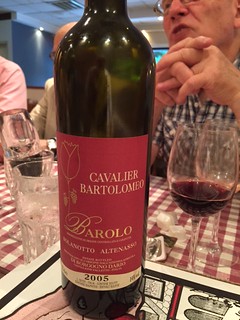 Julian and Joe Levine talked about the old days and traveling to coin shows. Eric and Dave talked tokens, and Gene tried out his French.
Julian and Joe Levine talked about the old days and traveling to coin shows. Eric and Dave talked tokens, and Gene tried out his French.
Julian brought along a serving tray studded head to toe with coins.
I joked that we would be serving pizza on it. But the restaurant was no pizza joint.
I thought my salad was wonderful, and my entrée of Spaghetti Bolognese merely OK. But since I shunned drinks and desert my tab came to a mere $12. Can't complain about that! Overall people thought the food was fine and Gene raved about the wine. In his picture the bottle obscures a view of Joe Esposito. To the right is a glimpse of Dave Schenkman.
Congratulations, Dave!
I learned at the meeting that Dave will be inducted into the Numismatic Hall of Fame at the ANA World’s Fair of Money awards banquet next month. Congratulations! The more I've come to know him, the more admiration I have for Dave's boundless knowledge of and dedication to the numismatic hobby. One doesn't author eight standard reference books and more than 200 articles without a true passion for the subject matter.
Bastille Day
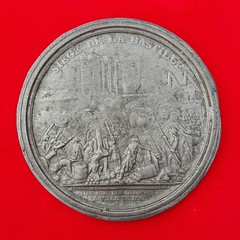 It being Bastille Day (July 14), that was our theme for exhibits.
Joe Esposito brought along a medal commemorating the storming of the Bastille prison in 1789, which kicked off the French Revolution.
It being Bastille Day (July 14), that was our theme for exhibits.
Joe Esposito brought along a medal commemorating the storming of the Bastille prison in 1789, which kicked off the French Revolution.
Joe writes:
It was the first in a series of medals on the French Revolution and Napoleon engraved by Bertrand Andrieu. This 83-mm medal, “Storming of the Bastille,” was probably produced around 1800.
There was a lot of ordinary chitchat. We did discuss Dave’s forthcoming book on Virginia tokens and Virginia tokens in general. There was a brief discussion of the value of the Libertas Americana medal. Dave and I discussed banjos.
After the meeting, Eric and I discussed his fine article “Mystery of the Everman Counterstamp” in the June issue of The Numismatist. Tom and I talked about railroads, particularly the Reading Railroad; he has an interest in the Reading Railroad Heritage Museum in Pennsylvania (he was wearing its logo shirt).
Virginia Tokens
Dave Schenkman and Eric Schena brought along a hardcopy of their massive manuscript for the new edition of Dave's book on Virginia Tokens. It's quite impressive - 591 pages with full color illustrations throughout. Eric assembled and formatted the manuscript, and his wife Heather proofread it. The long-awaited work will be the new standard of the field. Stay tuned to The E-Sylum for ordering information. Dave also brought with him a couple nice Virginia tokens.
Dave Schenkman writes:
Here the two Charles J. Raine, Lynchburg, VA 1860 tokens. One is brass, 28mm, and weighs 9.2gr. The token is scarce, but by no means rare. The other one is copper, 29mm, and weighs 16.6gr. It surfaced in the February 1975 Bowers &Ruddy sale of the Newport Collection (lot 01318). I’ve never seen another.
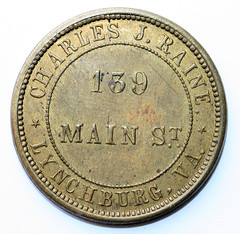
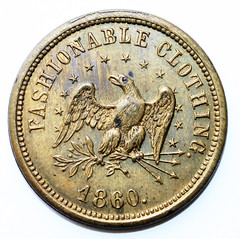
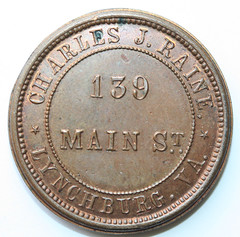
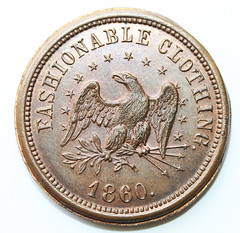
Overstruck Kopecks
Steve Bishop bought along a couple of interesting Russian pieces.
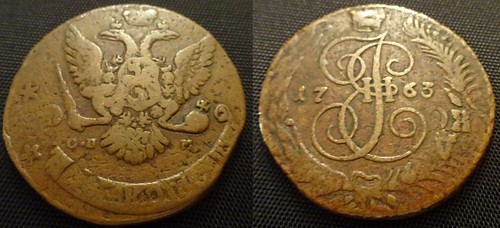
1763 SPB 5 Kopecks overstruck on 1762 10 Kopecks

1788 MM 5 Kopecks overstruck on 1762 10 Kopecks
Some U.S. Coins
Steve also had some nice (and nicely toned) U.S. coins.
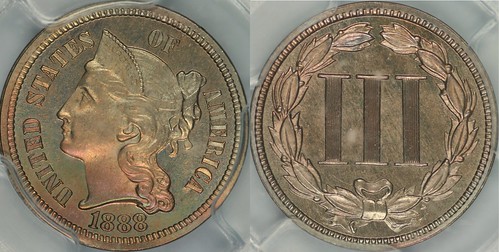
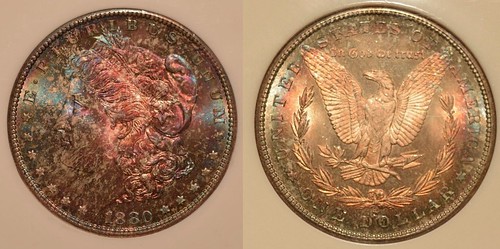
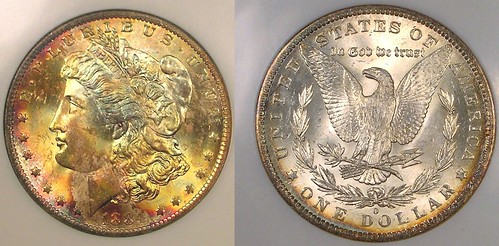
The Switt-Langbord 1933 Double Eagles
One topic of conversation at my end of the table was the ongoing Langbord family 1933 double eagle case. It was Coin World's most-read story of the week. We didn't think the nasty tone of the government's latest brief would help their case - it seemed to smell of desperation and a lack of any defensible remaining legal argument.
To read the complete article, see:
Government seeks 1933 gold double eagle rehearing involving coins from 'the family of a thief'
(www.coinworld.com/insights/government-seeks-rehearing-on-decision-in-1933-double-eagle-case.html)
Of Kids and Food
Eric and Tom reminded me of the upcoming Annandale Coin Show and our regular kid's meeting. Time to get organized! In subsequent emails and three of us and Jon Radel developed a plan.
It was another great meeting. It's always fun to get together with fellow numismatists. On Friday I had a dinner of a different sort, going out with my family to try a new Chinese restaurant that had opened nearby. Actually, we were missing one family member, as son Tyler had opted to stay home. And actually, it was an old Chinese restaurant under new management. We hadn't set foot in the place since the first year we lived in the area.
As we pulled up to the place, our son Christopher remembered our last (and only) visit. "Isn't this the place where Tyler spilled water all over the table?" It was. We'd walked in with fussy kids and fusty grandparents, couldn't decide what we wanted to order, and the water spill was the last straw. We apologized, left a tip, and exited without ordering. "Tell them we got rid of that kid," I said.
Well, there was no one there to remember us. It was a totally new management and staff. How could we tell? My mother-in-law later said, "This is the first Chinese restaurant I've ever seen without Chinese people". Which, in Northern Virginia, is like a fast food place without Spanish-speaking help. That should have been our first clue. Everyone looked Middle Eastern. That explained the new neon "Halal" sign in the window. This was going to be interesting, if nothing else.
A teenager who seemed new at all this took our orders. We waited. And waited. And waited some more. The egg drop soups arrived cold and no one touched them. We waited some more. The owner came over to apologize and promised everything was cooking and would be out soon. We waited some more. Next he brought out free trays of spring rolls, which were actually very tasty. So we waited. And waited some more. I said, "I think we're fasting for Ramadan..."
My mother-in-law, who hadn't had Chop Suey since moving from Pittsburgh had been looking forward to this, since this place had it on the menu that came in the mail. When her Shrimp Chop Suey finally came, it was more of a Shrimp noodle dish. Not Chop Suey by anyone's definition.
I joked that the kitchen staff must be watching YouTube videos to learn how to cook Chinese. Like the two LG repairmen we had at our house last month. I kid you not - they were watching a YouTube video on their phone to learn how to replace the compressor. How do you say "Dumb and Dumber" in Korean?
At the end of our ordeal someone I guessed was the owner's son came out to apologize again and gave us our meals free. I didn't know whether to laugh or cry when he said, "When the whole world has Smartphones you'd think anyone could look up how to make Chop Suey..." I'm glad these people aren’t performing heart bypass surgery. I later told my wife, "I called and got us a family discount for having our stomachs pumped."
Here's looking forward to next month's Nummis Nova dinner - if I live that long.

ARTICLE DISCUSSES BANKNOTE DESIGNS
But back to today's theme; banknotes. If there’s any category of design that’s strangled by convention, it’s banknotes. And with good reason too. If you’re trying to persuade someone to hand over tangible objects of value (gold and silver, for instance) in return for a piece of paper (as was the case when banknotes were first used), that piece of paper really needs to look the business. Trust, authority and gravitas are all paramount. But now that we’re happy to pay for goods with a few taps on a phone screen, do we really need all the frills and calligraphy and portraits of ponderous old men? Here’s a few examples of currencies that go against the grain.
Aruba

Aruba’s banknotes all feature island wildlife - including frogs, turtles, snakes and owls and – hurrah! – not a single venerable colonial gent or post-independence despot in sight. There’s a lovely geometric graphic motif with textures and details that hints back to the island’s Carib heritage but of course the overall impression is strikingly modern.
Bhutan
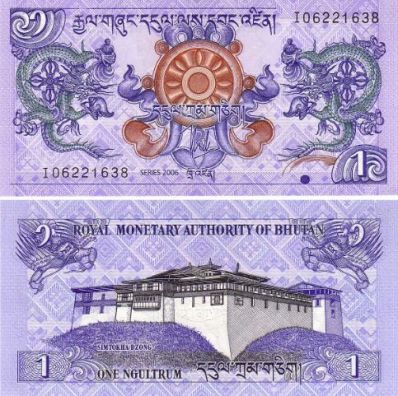
From simplicity to ornate embellishment – Bhutan’s beautiful banknotes might play by the rules of traditional banknote design, but they do so in a language that’s entirely their own. Check out those flying monkeys on the reverse of the 1 ngultrum note (they also win the prize for the best currency name).
Cook Islands
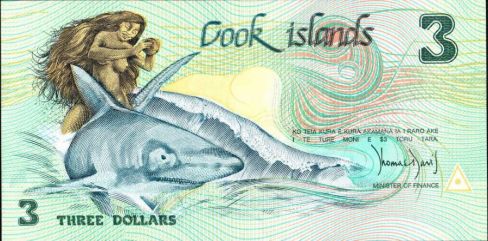
It's uncertain if this banknote is still in circulation, but certainly at some point the Cook Islands’ national currency featured a naked woman seemingly riding a shark, clapping a couple of coconut shells together. You go girl.
To read the complete article, see:
Take Five …. Design’s top banknotes
(www.thedrum.com/news/2015/07/17/take-five-design-s-top-banknotes)
ALVES REIS: THE MAN WHO STOLE PORTUGAL
 Throughout history there have been sophisticated schemes involving the counterfeiting of currency. Some have involved individuals using inkjet printers to make a quick buck while others have been state sponsored campaigns to destabilize a foreign government’s economy. Despite their varying complexity, they all revolved around the same basic theme: creating fake versions of actual banknotes. The man discussed today tried to change that paradigm. Instead of producing fake banknotes, he had unauthorized runs of genuine notes printed. The scheme involved a lot of cunning, as well as forged documents.
Throughout history there have been sophisticated schemes involving the counterfeiting of currency. Some have involved individuals using inkjet printers to make a quick buck while others have been state sponsored campaigns to destabilize a foreign government’s economy. Despite their varying complexity, they all revolved around the same basic theme: creating fake versions of actual banknotes. The man discussed today tried to change that paradigm. Instead of producing fake banknotes, he had unauthorized runs of genuine notes printed. The scheme involved a lot of cunning, as well as forged documents.
However, the payoff was immense.
While in jail for embezzlement in 1925 he concocted a scheme that would later be known as the Portuguese Banknote Crisis. He and a few associates forged a document in the name of the Central Bank of Portugal, the institution responsible for creating the supply of Portuguese currency, which authorized the printing of a run of banknotes. Reis took the forged documents to William Waterlow, of the printing company Waterlow &Sons, and convinced the company to print the notes. Since Waterlow &Sons had the original plates of the notes they were being asked to print, the notes printed for Reis were literally indistinguishable from the authorize prints. When Waterlow realized that the serial numbers printed were already used in previous runs, they contacted the bank. Their contact, unfortunately, was Reis, who reassured them that it was okay.

Portugal 500 escudos, reverse
Reis managed to have 200,000 copies of the above 500 escudos (the currency used at the time) note printed, totaling 100 million escudos face value. This was equal to .88% of Portugal’s GDP at the time.
To put that in perspective, if this was done in the US today Reis would have received $150 billion.
Reis would then use the currency to buy gold-backed foreign currencies and trade in the 500 escudo bills for small denominations. Reis would go on to buy land, jewelry, clothing and businesses throughout Portugal and Angola, creating an economic mini-boom.
Eventually Reis was discovered. His bank, Banco de Angola de Metropole, was investigated for illegally buying foreign-backed currencies. While under investigation, their reserves of the illegal 500 escudo bills were searched. By chance, the authorities managed to find notes with the same serial number, meaning they were illegal duplicates. Had it not been for that, there would have been no proof of counterfeiting.
Reis and his associates were aware of an arrest warrant out for them and while some managed to escape, Reis chose to face the charges and defend himself. The quality of his forged documents was so good that some believed that the whole plot was devised by the central bank, delaying the trial for five years. Reis was eventually sentenced to 20 years in prison, which he served in its entirety. During his sentence he would often ask why the notes he printed were deemed illegitimate despite being no different than the genuine ones. Upon his release he was offered a job, oddly enough, as an employee in a bank. However, he refused the job and lived a quiet and modest life until his death by a heart attack in 1955.
To read the complete article, see:
Alves Reis: The Man Who Would Be Rich
(www.coinweek.com/education/coin-grading/alves-reis-man-rich/)
PERUVIAN GUANO BONDS PAYABLE IN U.S. COINS
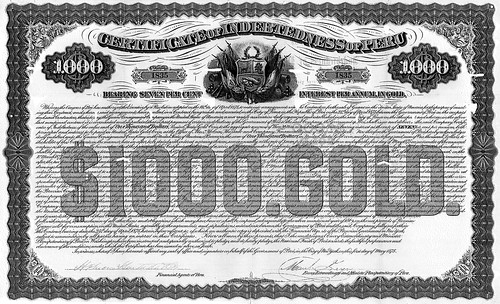
An old debt for Peru has come home to roost.
Fourteen bonds the country issued in 1875 to pay off debt to a U.S. guano consignment company are now held by an Illinois firm that says it’s having a hard time redeeming them.
Each bond promised a payoff of $1,000 “United States Gold coin” plus 7 percent interest a year, according to the complaint filed Thursday by MMA Consultants 1 Inc. in federal court in New York.
The bonds bear the signature of Don Manuel Freyre, who is described as the “Envoy Extraordinaire and Minister Plenipotentiary of Peru,” according to the complaint.
MMA said it sent three letters to Peru’s Minister of Economics and Finance requesting payment to no avail. The company is suing for breach of contract. It didn’t reveal in the lawsuit how it came by the bonds.
Guano, the dung of seabirds, found especially on islands off the coast of Peru, is used as a fertilizer.
The case is MMA Consultants 1 Inc. v. Republic of Peru, 15-cv-05551, U.S. District Court, Southern District of New York (Manhattan).
To read the complete article, see:
Peru Haunted by 7% Guano Bonds Predating Machu Picchu Discovery
(www.bloomberg.com/news/articles/2015-07-17/peru-haunted-by-7-guano-bonds-predating-machu-picchu-discovery)
COINS RECOVERED IN RAID ON ISIS
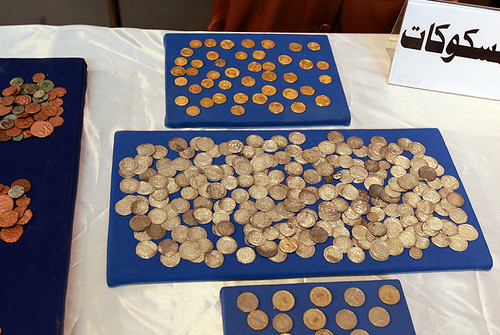
The United States returned Wednesday hundreds of Iraqi artefacts its special forces recovered during a raid in Syria against a man described as the Islamic State group's top financier.
Some of the pieces were displayed at the Iraqi national museum during a repatriation ceremony attended by Antiquities Minister Adel Shirshab and US Ambassador Stuart Jones.
"These artefacts are indisputable evidence that Daesh (IS) -- beyond its terrorism, beyond its brutality and destruction -- is also a criminal gang that is looting antiquities from museums and historical sites," Jones said.
"And of course the purpose of this is to sell these items on the black market," he said.
The pieces on display in one of the recently reopened museum's main Assyrian halls Wednesday were small items, including coins, statuettes and jewellery.
"The coins for example are from the Islamic period. This is evidence that this terrorism that claims such heritage is blasphemous is trying to profit from it by selling it," Shirshab said.
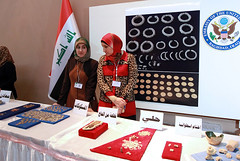 The artefacts were retrieved by the US commandos who carried out a rare raid inside Syria on May 15 during which Abu Sayyaf, a top IS figure, was killed.
The artefacts were retrieved by the US commandos who carried out a rare raid inside Syria on May 15 during which Abu Sayyaf, a top IS figure, was killed.
Abu Sayyaf was believed to be the jihadist organisation's top financier, and US officials said they were learning a lot by analysing what the raid had produced.
"These are very precious, priceless pieces," said Hakim al-Shammari, head of the exhibitions department at the national museum.
He could not estimate the black market value of the recovered artefacts but said they would have made a substantial contribution to IS finances.
To read the complete article, see:
United States returns Iraqi artefacts recovered in Islamic State group's top financier raid
(http://artdaily.com/news/80041/United-States-returns-Iraqi-artefacts-recovered-in-Islamic-State-group-s-top-financier-raid#.Varjofm6dhE)
THE BOOK BAZARRE
THE COMMAGENIAN COINAGE MITHRADATES
During the late 2nd century BCE, the region of Commagene, located in south-central Anatolia, became an independent kingdom during a period of high geopolitical tensions. By the first century BCE, the Seleucid Empire was waning, the Romans and Parthians were actively working to consolidate their own empires, and the Armenian kingdom continued to expand its territory under the leadership of Tigranes the Great. While these major powers dominated the political and physical landscape, Commagene was the setting for cross-cultural interaction brought about by trade and military activity. Commagene’s multifaceted political and cultural position is particularly evident in the bronze coinage of Mithradates I Callinicus (r. 96-70 BCE), who ruled the area under the sovereignty of Tigranes.
The American Numismatic Society possesses four examples of coins issued under Mithradates, but one in particular is unique:
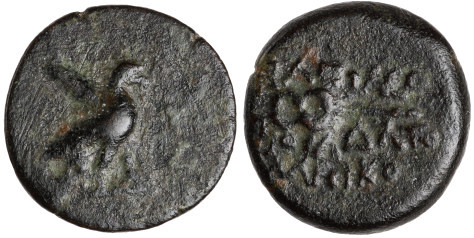
This coin is a rare type with an image of an eagle with a palm leaf under its wings on the obverse, instead of the more typical profile of a diademed king. A caduceus, a rod with intertwining snakes that is associated with the Greek god of commerce Hermes, is represented on the reverse, accompanied by the inscription ‘BASILEWS MITHRADATOU KALLINIKOU (‘of the king Mithradates Callinicus’).
The depiction of animals instead of rulers was common in the Greek world, where the eagle usually referenced Zeus. Yet if we consider the imagery of the eagle and palm branch on Mithradates’ coins within the context of first century Anatolia, the imagery may also express political alliance or allegiance to Tigranes. Specifically, the eagle commonly appears as an emblem of kingship in Tigranes’ coinage. In the example below, two eagles flank a rosette on his crown.
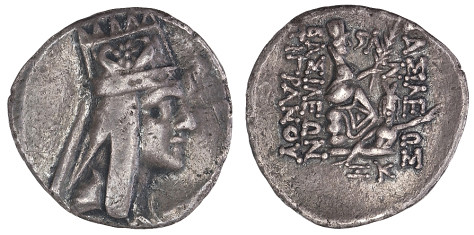
The eagle and palm branch on Mithradates’ coinage may thus be read as a conscious appropriation of kingship imagery that was associated with the dominant power in the region. It was a political act that acknowledged Armenian sovereignty on the one hand, and the Commagenian right to rule on the other. Moreover, the difference in the inscriptions on each coin is striking, and contributes to the present interpretation.
To read the complete article, see:
DIPLOMACY AND DISPLAY IN COMMAGENIAN COINAGE
(www.anspocketchange.org/diplomacy-and-display-in-commagenian-coinage/)
MARKOWITZ ON THE ANCIENT COINS OF CYPRUS
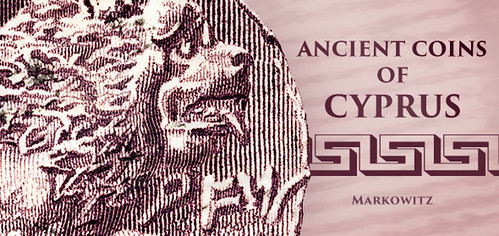
ON A CLEAR DAY, it’s just possible to see the Turkish shore 40 miles (64 km) away from Cape St. Andreas at the northeastern tip of Cyprus. The third-largest island in the Mediterranean after Sicily and Sardinia, Cyprus was settled in the ninth millennium BCE–possibly even earlier–by intrepid Neolithic mariners who somehow managed to cross that same gulf. Much of the copper that made the bronze by which the “Bronze Age” got its name was mined on Cyprus.
In Greek, the name of the island and the word for the metal are the same.
As a “crossroads of civilizations”, ancient Cyprus was home to a diversity of cultures: Greeks, Phoenicians and an indigenous people know as Eteo-Cypriots, whose language, surviving in a few fragmentary inscriptions, is still largely undeciphered. Egyptian, Assyrian and Persian empires asserted control over the island but allowed local elites to manage their own affairs. By the time coinage came into general use in the fifth century BCE, Cyprus consisted of about 10 “city-kingdoms,” coexisting uneasily.
Salamis
 Salamis, on the eastern coast, was probably the first and, for centuries, the most important coin-issuing city on the island.
Salamis, on the eastern coast, was probably the first and, for centuries, the most important coin-issuing city on the island.
Pnytagoras (351-332 BCE) was one of the last independent kings of Salamis, before it was absorbed by Alexander the Great. His fleet assisted Alexander at the epic siege of Tyre (332). Pnytagoras issued impressive gold staters with the head of Aphrodite (also identified as the Phoenician fertility goddess Astarte) on both sides. On the obverse she wears a turreted crown as a city goddess; on the reverse she wears a simple tiara.
On Pnytagoras’ silver coinage, Aphrodite is paired with a youthful androgynous image of Apollo. The king’s name is abbreviated to two Greek letters ΠΝ.
Kition
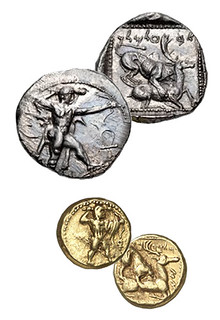 Kition (Citium in Latin, or Kittim in Phoenician) was the most important Phoenician city of ancient Cyprus. The extensive silver and gold coinage of Kition typically carries the king’s name in Phoenician letters. The obverse bears an image of Herakles (identified by Phoenicians as Melqart, the patron god of the city of Tyre) brandishing his club and holding his bow. The reverse shows a lion attacking a stag–a dynamic scene common in ancient Near Eastern royal art. The last independent king of Kition, Pumayyaton (“Pygmalion” in Greek) was defeated and killed in 312 BCE by Ptolemy I of Egypt.
Kition (Citium in Latin, or Kittim in Phoenician) was the most important Phoenician city of ancient Cyprus. The extensive silver and gold coinage of Kition typically carries the king’s name in Phoenician letters. The obverse bears an image of Herakles (identified by Phoenicians as Melqart, the patron god of the city of Tyre) brandishing his club and holding his bow. The reverse shows a lion attacking a stag–a dynamic scene common in ancient Near Eastern royal art. The last independent king of Kition, Pumayyaton (“Pygmalion” in Greek) was defeated and killed in 312 BCE by Ptolemy I of Egypt.
To read the complete article, see:
Ancient Coins of Cyprus
(www.coinweek.com/ancient-coins/ancient-coins-cyprus/)
PAY WITH BLOOD AT TRANSYLVANIAN FESTIVAL
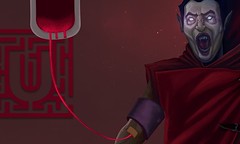 Two tickets for the Transylvania music festival? That’ll be two pints of blood, please. It may sound like a bad episode of Scooby Doo, but organisers of the Untold festival in northern Romania are offering festivalgoers discounts if they donate blood before buying tickets.
Two tickets for the Transylvania music festival? That’ll be two pints of blood, please. It may sound like a bad episode of Scooby Doo, but organisers of the Untold festival in northern Romania are offering festivalgoers discounts if they donate blood before buying tickets.
“Given that Romania faces an acute blood shortage in medical facilities, a campaign that takes inspiration from these myths in order to draw attention to a real problem is more than welcome,” the festival’s director general, Bogdan Buta, said.
The Untold festival, which runs from 30 July - 2 August in the picturesque city of Cluj-Napoca, is offering a 30% discount to anyone who donates blood at one of Romania’s 42 blood centres until 24 July, as well as free one-day festival tickets to anyone who gives blood at a mobile unit that will be set up for two days in Bucharest or at the blood transfusion centre in Cluj-Napoca.
“We were talking about how to incorporate Dracula into our festival and after seeing the numbers and how behind Romania was in blood donations we had this idea,” said Stefana Giurgiu, the festival’s PR manager.
Forty-five people, many first-time donors, had signed up and given blood by noon on the campaign’s first day.
“It’s great, I’ve never seen anything like this before,” said Krisztina Fejer, a 23-year-old photographer from Cluj-Napoca who plans to donate her blood for the first time early next week to get a ticket for one of her friends. “It’s a positive campaign, but I hope people continue giving blood afterwards, when there is no reward for them.”
Pay with Blood is also proving to be a slick PR move for a first-time music festival hoping to attract hundreds of thousands of visitors to its paid venues and free entry areas. “My phone hasn’t stopped ringing since we announced the campaign,” said Giurgiu.
To read the complete article, see:
Pay with blood: Transylvanian festival offers ticket discount for donors
(www.theguardian.com/world/2015/jul/17/pay-with-blood-transylvanian-festival-offers-ticket-discount-for-donors)
THE BOOK BAZARRE
ARTICLE DETAILS TRAIL THAT LED TO TOMMY THOMPSON
The manager of the quaint Florida motel knew her longtime resident as Susan Owens, a traveling nurse who appeared to have plenty of money and a friendly word for everyone.
“She was Susan Owens in my eyes, and she talked to me every day that she was around,” Virginia Smith, manager of the Pennwood Motor Lodge, said last week. “Her and I became friends.”
But, Smith learned last year, the dark-haired nurse wasn’t a nurse, and she wasn’t Susan Owens.
She was Alison Antekeier. U.S. marshals had been searching for her since shortly after she’d moved to the lodge in August 2012, the same month that she and boyfriend Tommy Thompson had gone on the lam.
Thompson and Antekeier disappeared in late 2012 from a $3,300-a-month Vero Beach, Fla., mansion after a federal judge in Columbus ordered them to appear to answer questions about missing gold.
Antekeier’s residency at the motor lodge in Sebastian in southern Florida came to light in federal search warrants unsealed in late June. They offer tantalizing details about the 2 1/2 years that Thompson and Antekeier spent in hiding and how they were caught in a Hilton hotel in Florida in January.
Smith said that Antekeier first rented a room at the lodge, then, beginning in December 2012, a three-bedroom house on the property.
“She said she didn’t have enough room in Room 21,” Smith said. “She said she liked privacy, and I told her she’d have all the privacy she wanted in the house, which is back in the woods.”
Smith said Antekeier refused to have lodge workers clean the house, saying she preferred to clean it herself. So it wasn’t until June 2014 that a lodge employee went into the home, to retrieve mattresses stored there, and learned Susan Owens’ secret.
Maintenance man Walter Lomas found registration papers for the Mercury Marquis with Antekeier’s name on them. Suspicious, he did a computer search of the name — and learned she was a fugitive. Online photos showed that Antekeier and Owens were the same person.
Smith, ironically, was in Ohio on vacation when Lomas called her with the news.
“I told him, ‘Walter, you have to call the police. It’s our duty to turn her in no matter how much we like Susan,’ ” Smith recalled.
The stash included 35 cellphones, five laptops, more than 1,000 microcassette tapes, more than 500 different medications concealed in cases of soft drinks, bank statements, a coin-shipping container and thousands of court documents.
Smith said that included more than 20 locked suitcases tied together and stashed in a closet.
Search-warrant paperwork says Antekeier rented the house at Pennwood using a fake Florida ID in the name of Susan Owens. The motor lodge, on Rt. 1 along Florida’s east coast, is 3 miles from the beach.
 The only numismatic connection here is the mention of the "coin-shipping container". As noted in earlier articles, all S.S. Central America gold is accounted for. The "missing gold" in the article refers to 500 commemorative re-strikes of the historical 1855 Kellogg &Co. $50 gold pieces made by the Gallery Mint using Kellogg &Humbert ingots recovered from the ship.
Thanks.
-Editor
The only numismatic connection here is the mention of the "coin-shipping container". As noted in earlier articles, all S.S. Central America gold is accounted for. The "missing gold" in the article refers to 500 commemorative re-strikes of the historical 1855 Kellogg &Co. $50 gold pieces made by the Gallery Mint using Kellogg &Humbert ingots recovered from the ship.
Thanks.
-Editor
To read the complete article, see:
Records from court tell of Thompson and Antekeier's life on the run
(www.dispatch.com/content/stories/local/2015/07/13/records-from-court-tell-of-life-on-the-run.html)
U.N. SAYS 'CAPT. KIDD'S TREASURE' ISN'T
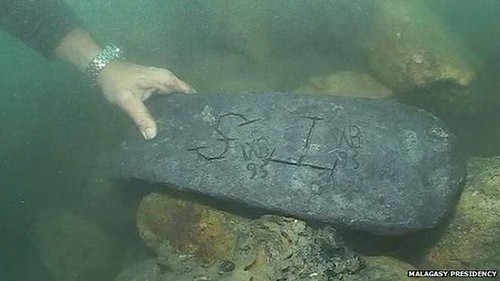
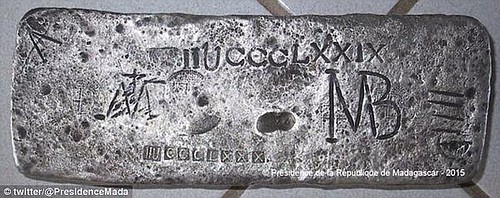
It was meant to have solved an enduring mystery of the high seas – the whereabouts of the sunken treasure of 17th-Century pirate William Kidd.
Plucked from the bottom of the Indian Ocean, the 50kg 'silver ingot' garnered world headlines in May after it was unveiled to much fanfare before the Madagascan President.
But the claims by American explorer Barry Clifford that he had discovered the British pirate's lost loot and scuttled Adventure Galley were rubbished by UNESCO last night.
A team from the UN's cultural body visited the site to verify Clifford's claims and brusquely dismissed his find as a fake.
In a damning report, UNESCO said the 'silver' ingot was just a lead weight and that the supposed shipwreck was old rubble in a bay of Sainte Marie, a small island east of Madagascar.
The report said: 'What had been identified as the Adventure Galley of the pirate Captain Kidd has been found... to be a broken part of the Sainte-Marie port constructions.
'No ship remains have been found. Also the metal ingot, recovered apparently from the above site, is not a 'silver treasure', but is constituted of 95 per cent lead.
'It does not contain silver and has been identified as a lead-ballast piece.'
Clifford, who is making a television documentary based on his hunt, had unveiled the 'ingot' before Madagascan President Hery Rajaonarimampianina and the U.S. and British ambassadors.
Clifford's team reacted strongly to UNESCO's report, saying it stood by its claims. 'I believe UNESCO is going to take a very good thing away from Madagascar and the people of Sainte Marie,' said Clifford's son Brandon Clifford, who works with him. 'It's incredibly unfortunate.' Documentary producer Sam Brown called UNESCO's report a 'disgrace' and said the UN body was motivated by its opposition to privately-funded research. He also expressed surprise that the ingot was made of lead as Clifford was '100 per cent convinced it was silver'.
Dick adds:
Don't call me a cynic, or paranoid, but I don't know if I would jump on the UN's bandwagon. I suspect that Barry Clifford has more expertise than the UN's experts. In the cause of "cultural property" the UN would have an ulterior motive to assist the Republic of Madagascar to swoop in and confiscate what was found.
To read the complete article, see:
You can't Kidd a kidder! 'Silver ingot' from legendary pirate Captain Kidd's treasure horde discovered off Madagascar is a FAKE, say UN experts, who reveal it is 95% lead
(www.dailymail.co.uk/news/article-3161919/Silver-ingot-legendary-pirate-Captain-Kidd-s-treasure-horde-discovered-Madagascar-FAKE-say-experts-reveal-95-lead.html)
To read the earlier E-Sylum article, see:
HAS 'CAPT. KIDD'S TREASURE' BEEN FOUND?
(www.coinbooks.org/esylum_v18n19a36.html)
ATOCHA MONEY CHAIN AMONG AUCTION ITEMS
Nuestra Senora de Atocha went down in a violent hurricane in 1622 near the Florida Keys laden with New World gold while en route to Spain. It was among a fleet of nine ships that were lost at sea; hundreds of people perished, including nobility who brought along their personal jewels.
Treasure hunter Mel Fisher searched 16 years for it before discovering the Atocha motherlode in 1985. What he found was the stuff of legends — 40 tons of silver and gold, fine Colombian emeralds and over 1,000 silver bars.
On Aug. 5, Guernsey's will auction 40 select items from the doomed ship. They represent some of Mel and Dorothy Fisher's favorite pieces, said their daughter, Taffi Fisher Abt. Fisher died in 1998; his wife, Dorothy, died in 2009.
They include two spectacular gold chains. One, called a "money chain," has big links the size of a thumbnail and extends past the waist. Fisher wore it on the "Tonight Show Starring Johnny Carson" soon after the ship's discovery.
In the Colonial era, the Spanish king placed a 20 percent tariff on gold bullion called the Royal Fifth. But if the gold was turned into jewelry, the tax was forgiven.
Each link of the "money chain" is of equal size and weight and could be twisted off and used as formal currency. It could bring $90,000 to $120,000.
To read the complete article, see:
Treasures From Sunken Spanish Galleon Set for Auction
(http://abcnews.go.com/US/wireStory/treasures-sunken-spanish-galleon-set-auction-32244335)
TREASURE SEEKERS SEARCH FOR AUTHOR'S HIDDEN CHEST
 Years after the public caught wind that a treasure hunter's loot lies buried in remote New Mexico mountains, the precious chest remains undiscovered.
Years after the public caught wind that a treasure hunter's loot lies buried in remote New Mexico mountains, the precious chest remains undiscovered.
Forrest Fenn, 84, spent years assembling his bounty of gold, jewels and antiquities before a bout with cancer made him want to pass his treasures along to the next generation rather than continue to hoard it for himself.
But Fenn hasn't made his legacy easy to find. A puzzling poem stands between his hidden treasure and the man or woman who hopes to strike gold in the desert.
'There's 265 gold coins, eagles and American double eagles,' he said. 'And there's hundreds and hundreds of gold nuggets. You're gonna be amazed at what you find.'
Next, Fenn self-published a memoir, The Thrill of the Chase, distilling the autobiography and, intriguingly, including a poem that he says offers clues to lead some clever — or lucky — treasure hunter to the bounty.
It wasn't long before word of the hidden trove got out, and the publicity has caused a mini-gold rush in northern New Mexico.
One friend, Michael McGarrity, an author and former Santa Fe County sheriff's deputy, acknowledges it could be 'a private joke,' though he believes 'Forrest has certainly buried something.' If it was the treasure he saw, well, 'it really is quite an astonishing sight to see.'
There certainly seems to be no shortage of believers, including Doug Preston, whose novel 'The Codex' about a notorious treasure hunter and tomb robber who buries himself and his treasure as a final challenge to his three sons, is loosely based on Fenn's story.
'I've seen the treasure. I've handled it. He has had it for almost as long as I've known him. It's real. And I can tell you that it is no longer in his vault,' says Preston.
To read the complete article, see:
Can you solve this antique collector's clues that will lead you to gold-filled treasure chest buried in the desert?
(www.dailymail.co.uk/news/article-3158193/Can-solve-antique-collector-s-clues-lead-gold-filled-treasure-chest-buried-desert.html)
FEATURED WEB SITE: BANKNOTE WORLD
This week's Featured Web Site is suggested by Coin World Senior Editor Jeff Starck, who writes:In this week’s edition you wondered if there were a bank note image resource. The image database composed by Ron Wise and numerous collaborators is a helpful resource for collectors and writers alike!
From the site:
Banknote World offers images and information on tens of thousands of past and present notes.

http://banknoteworld.com/
